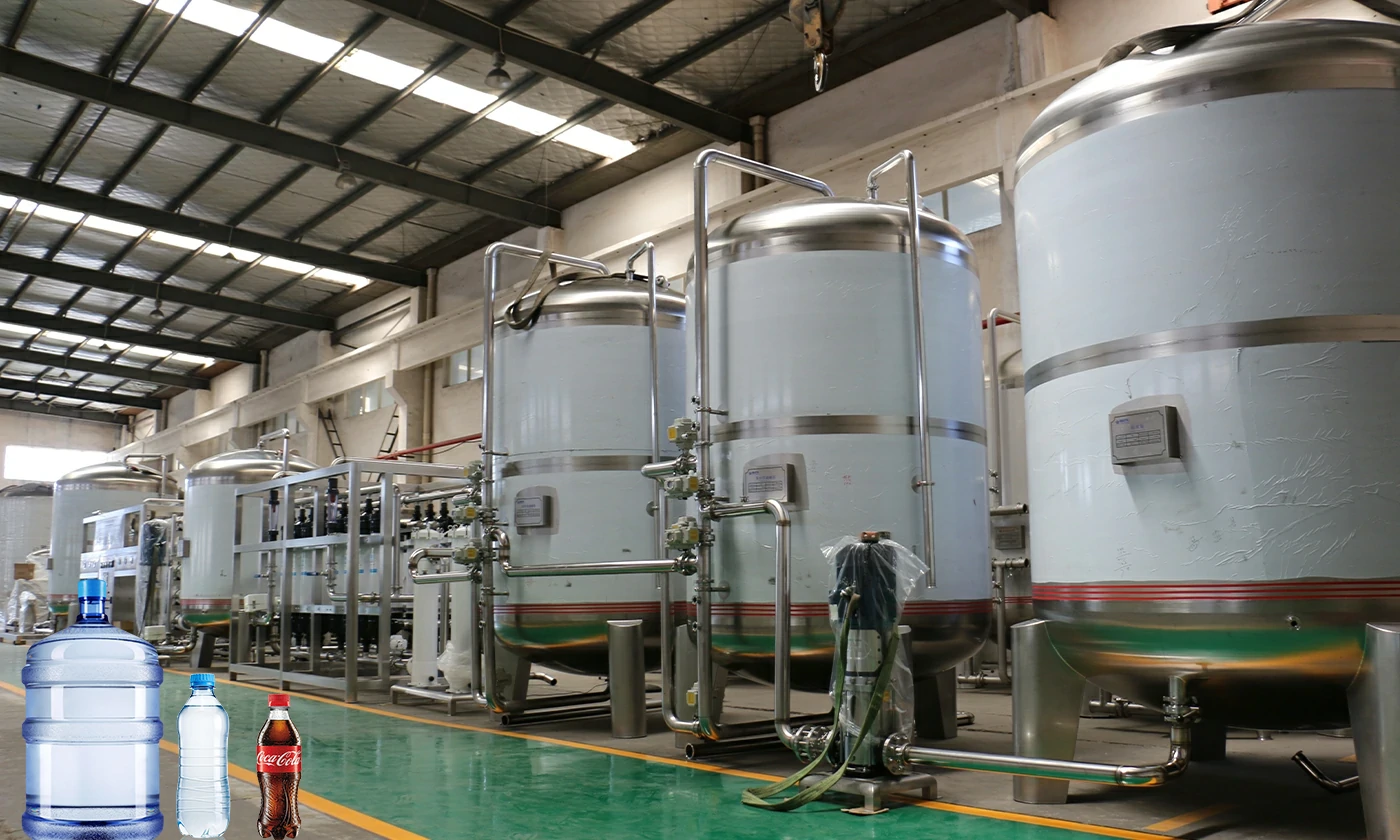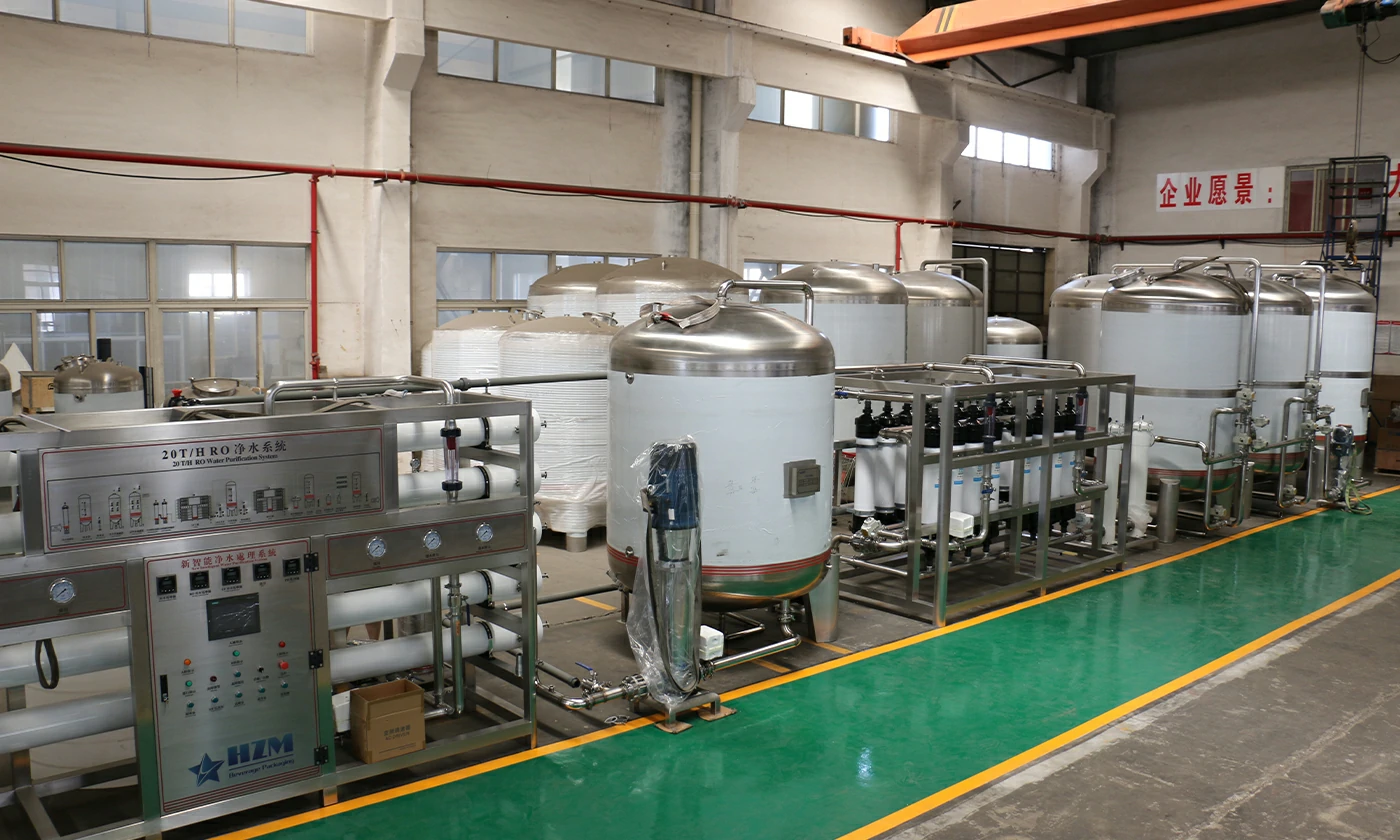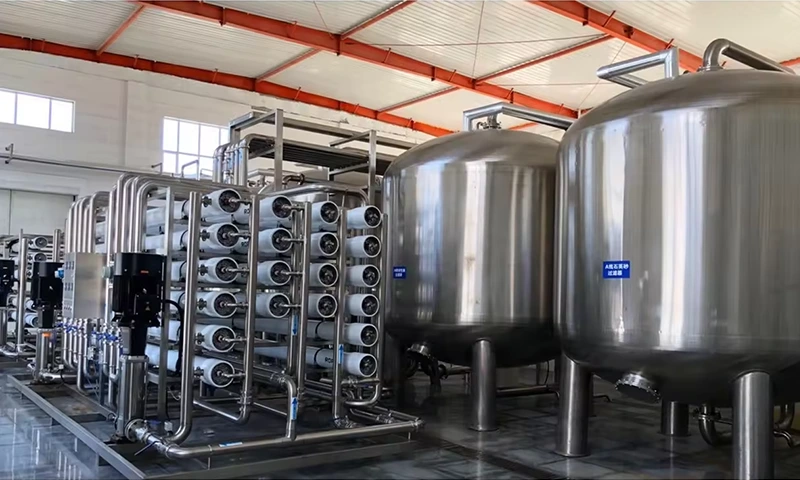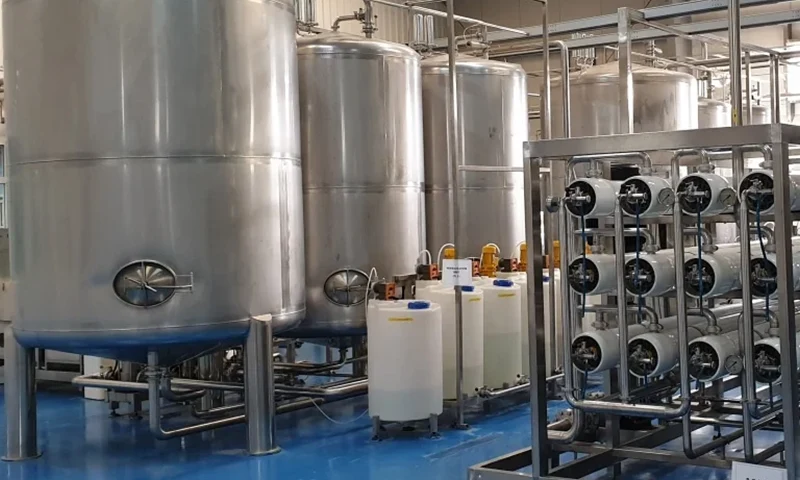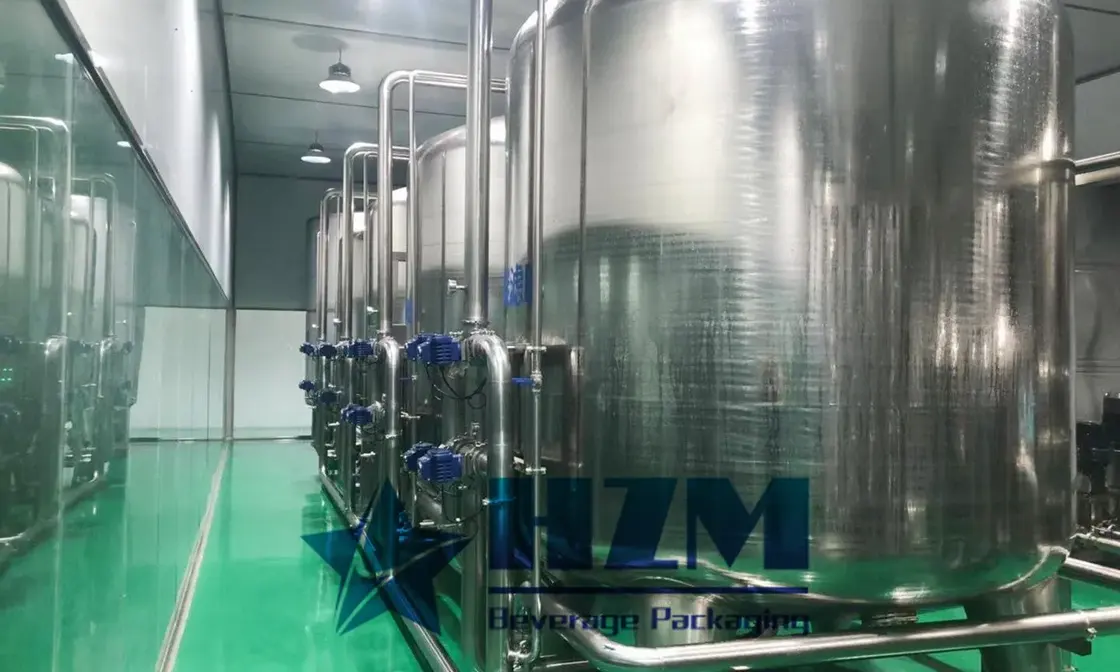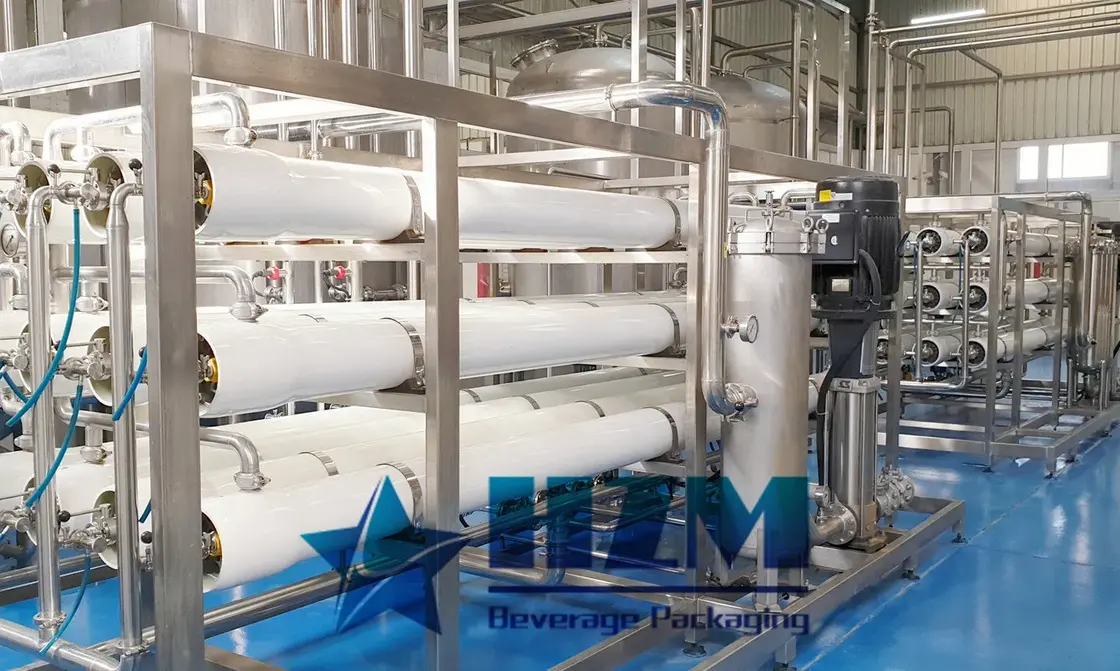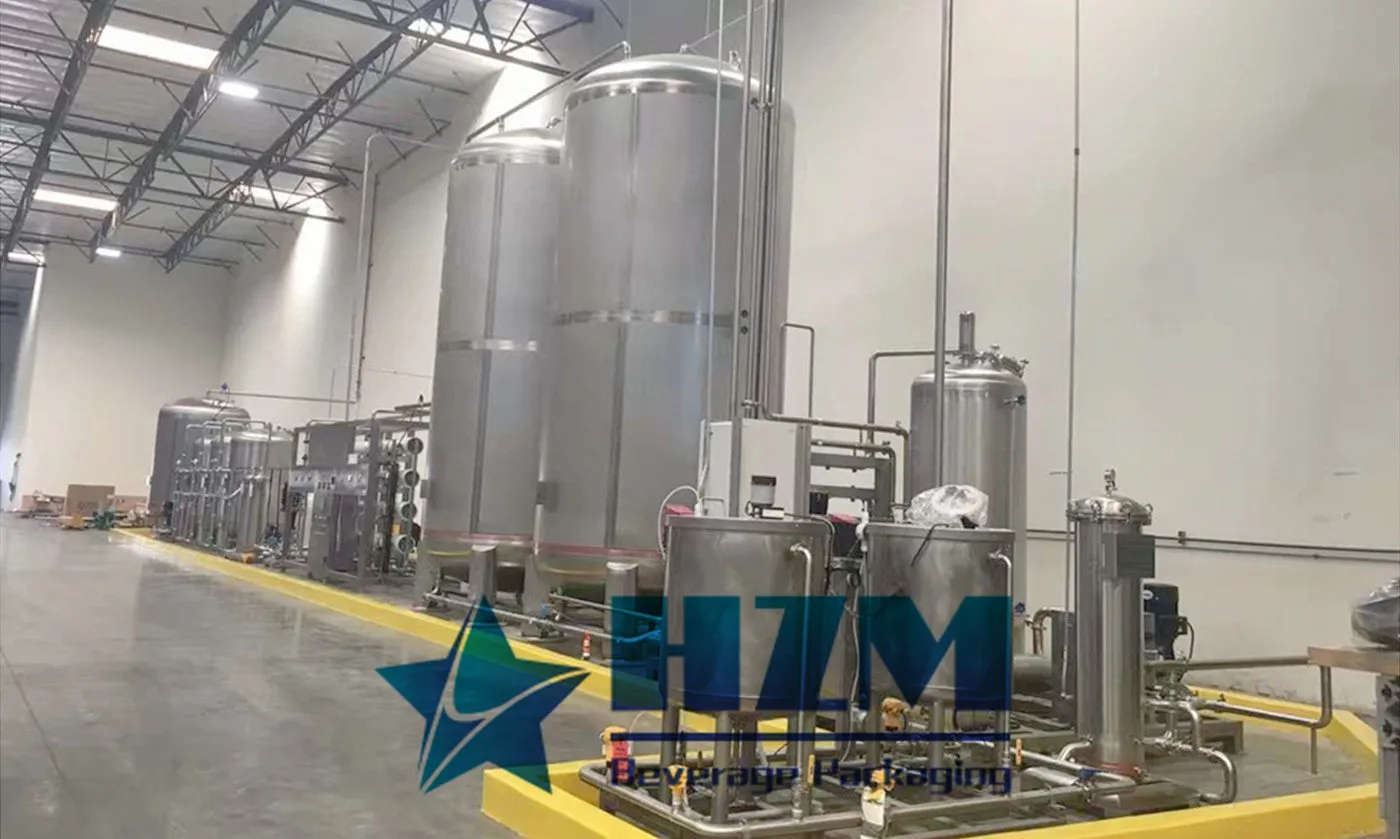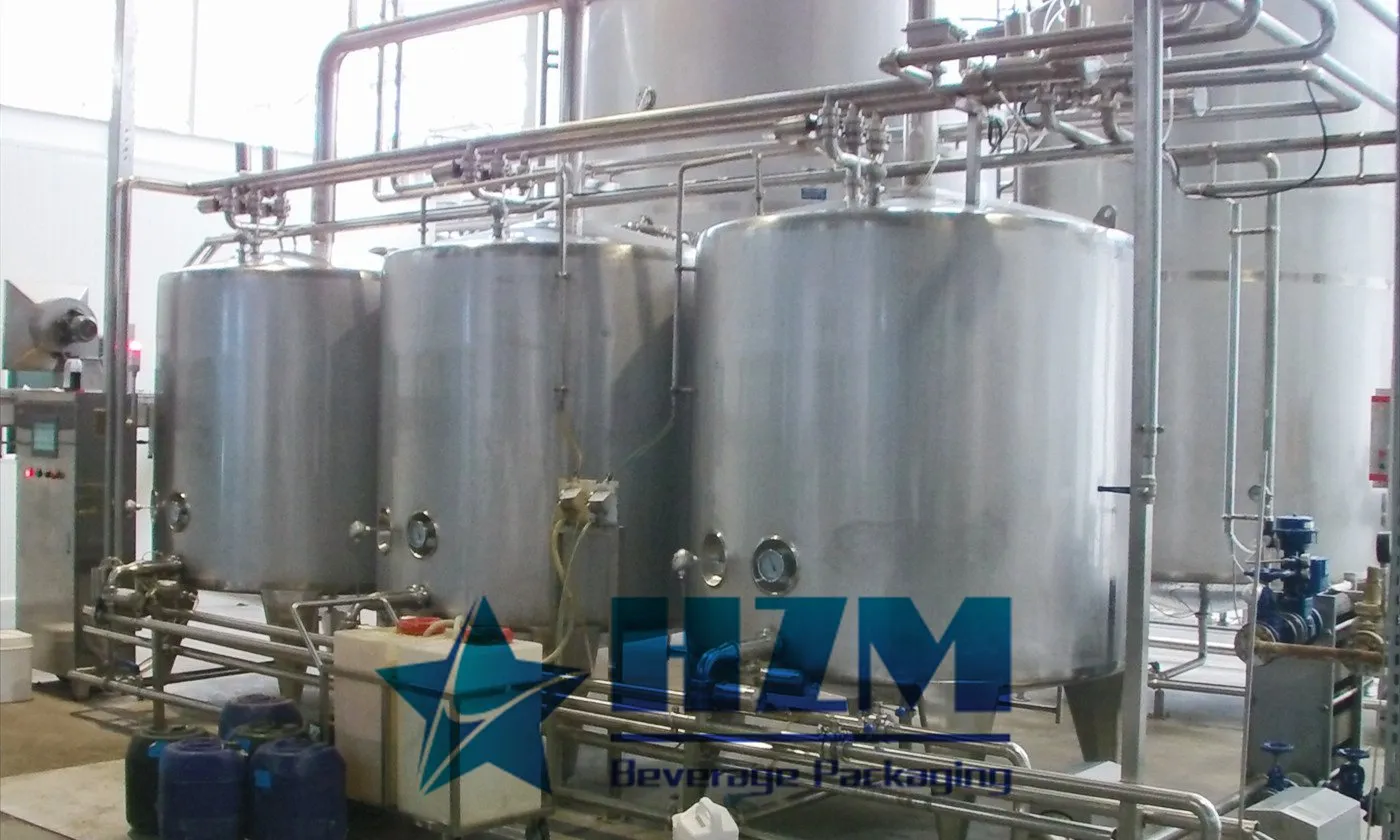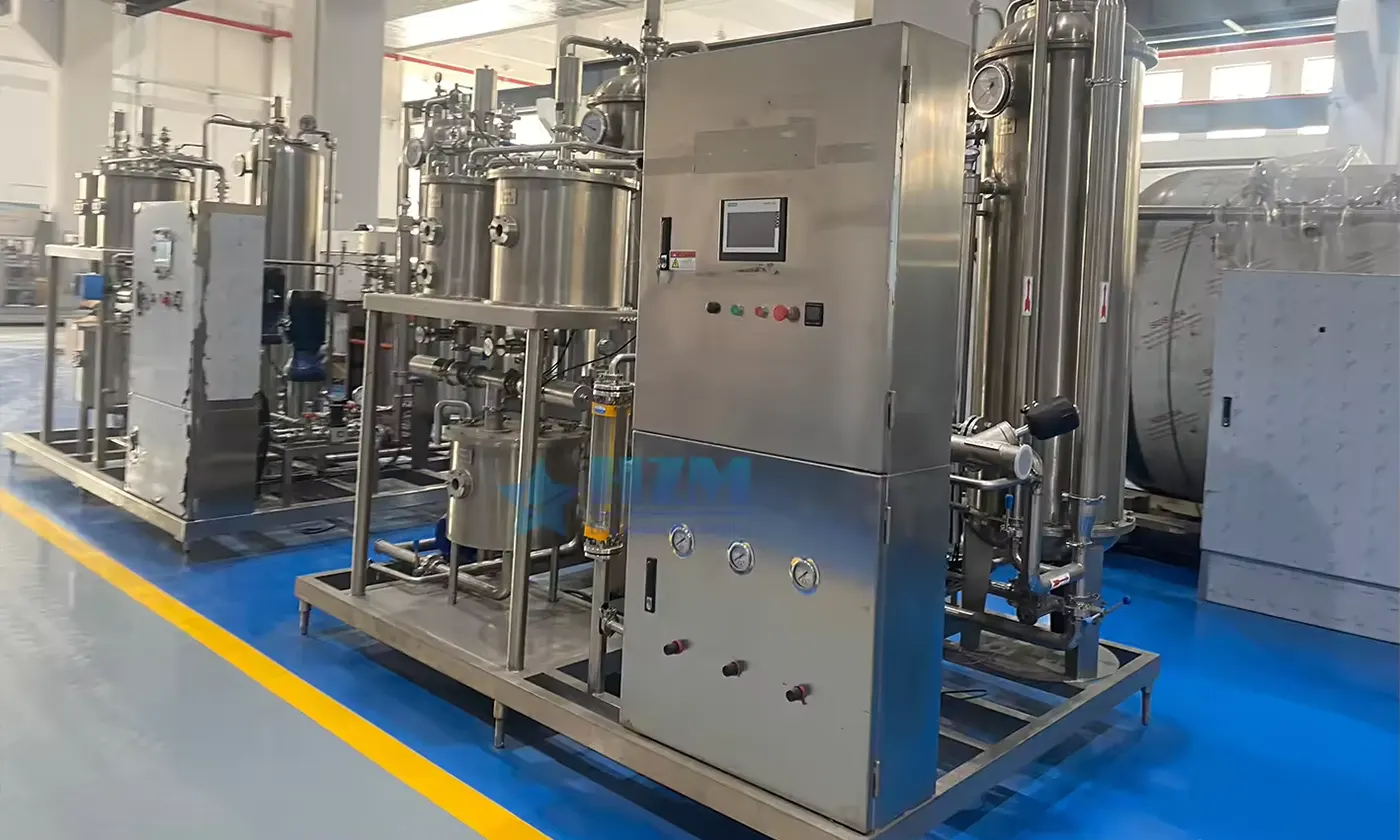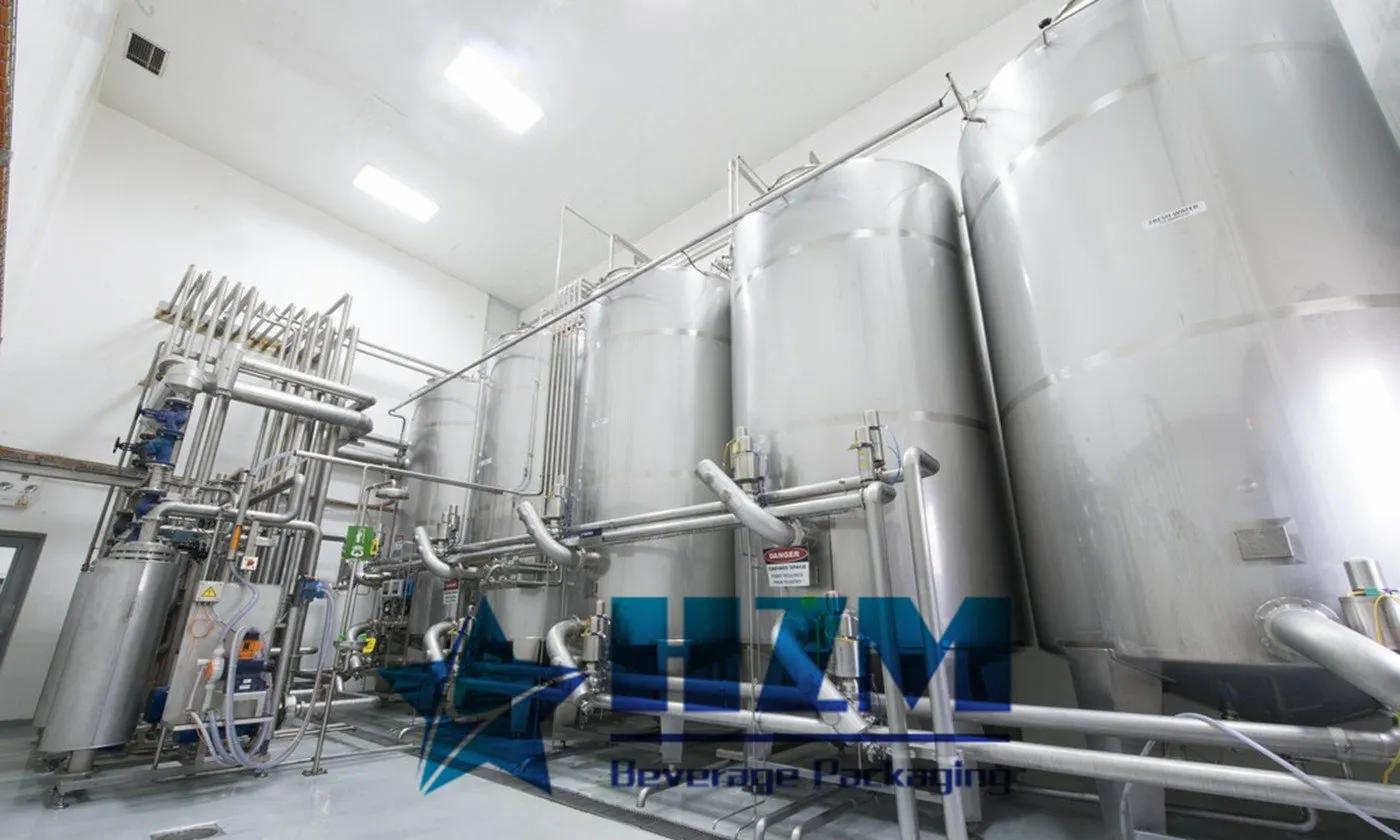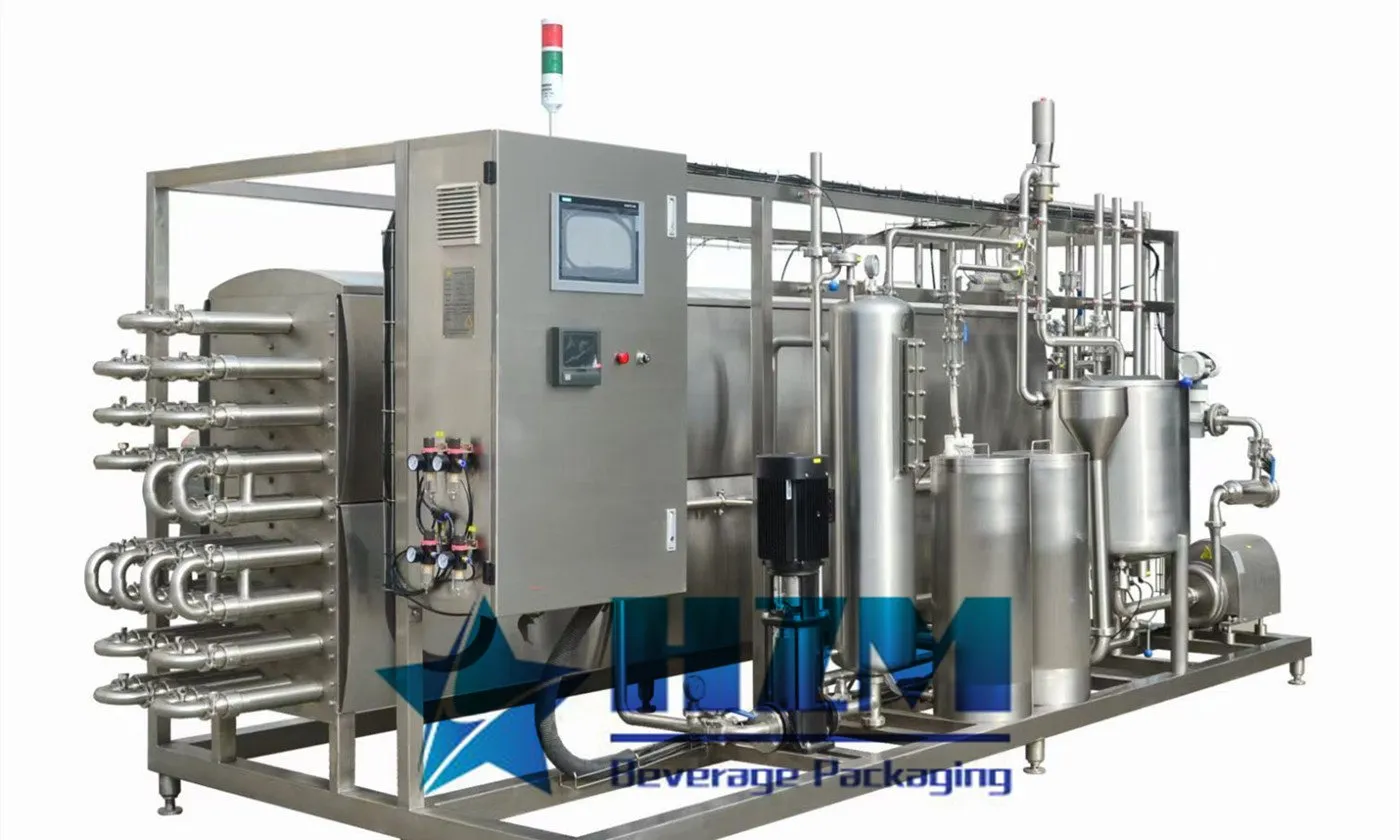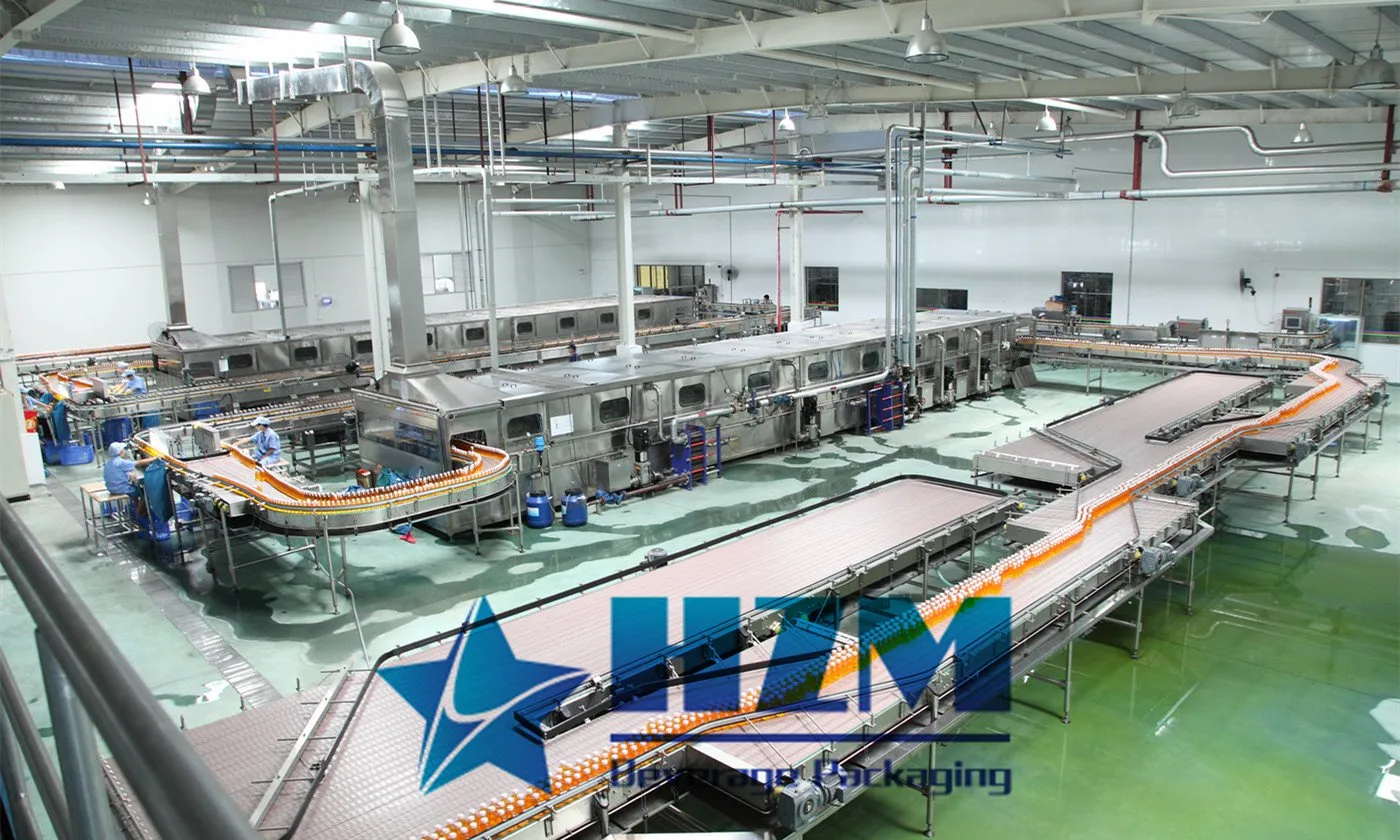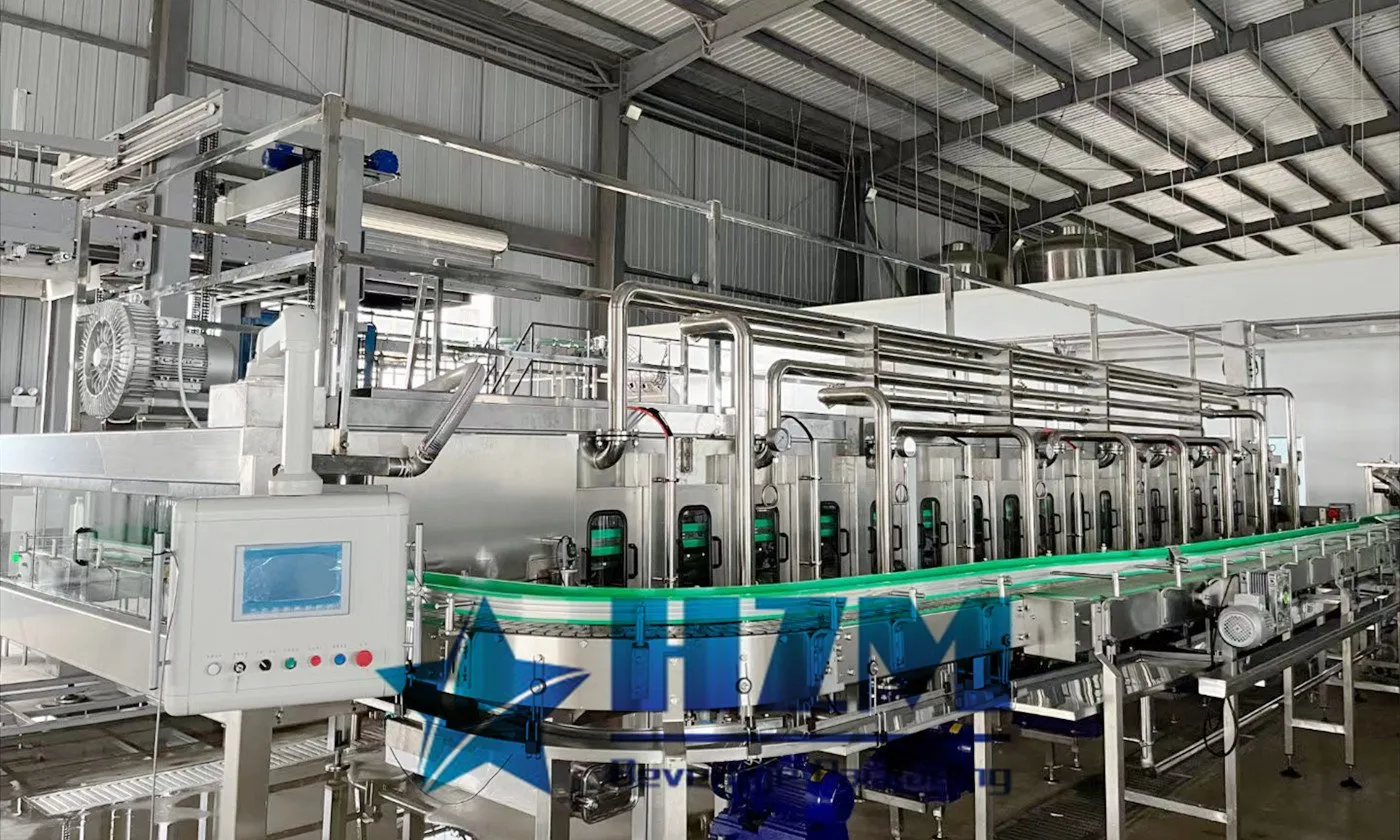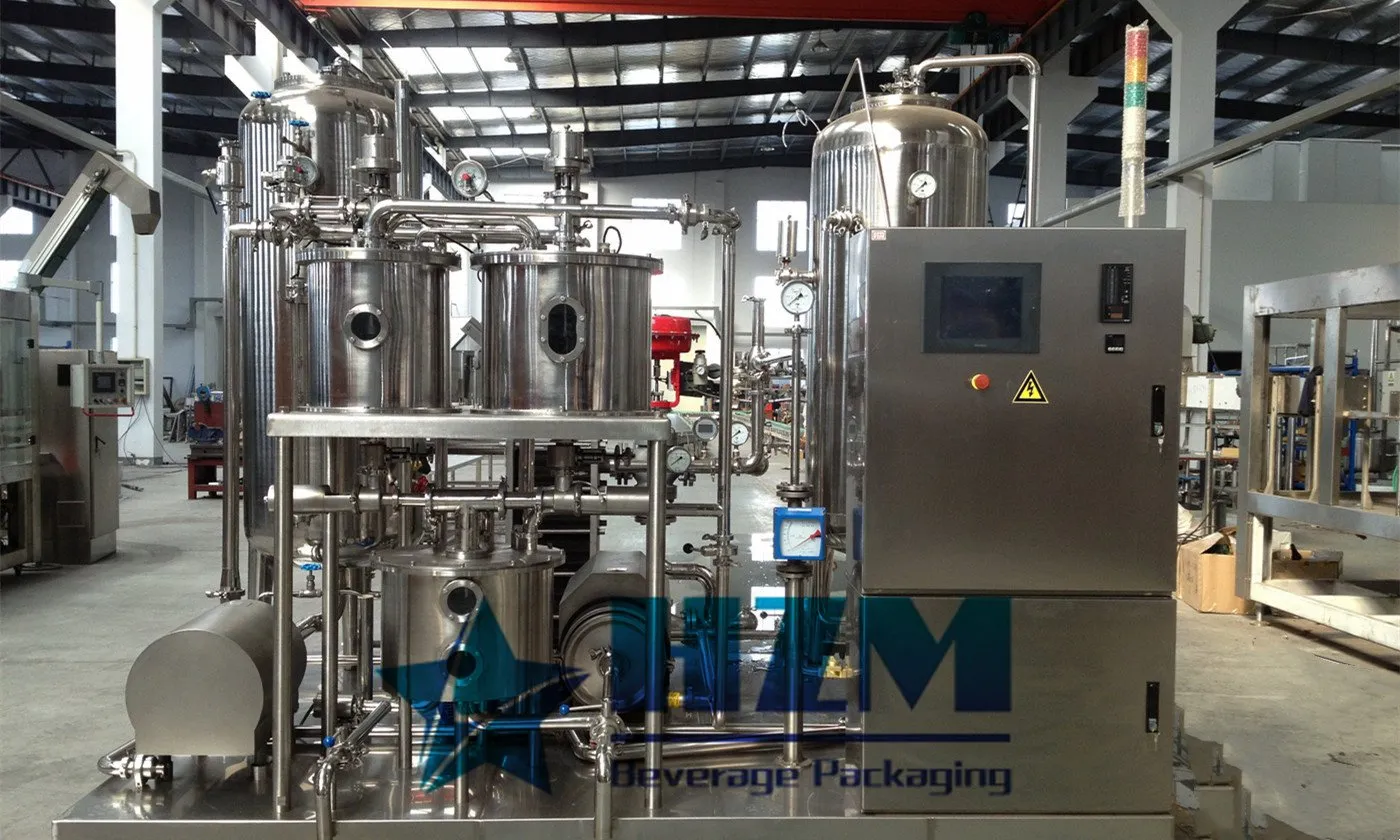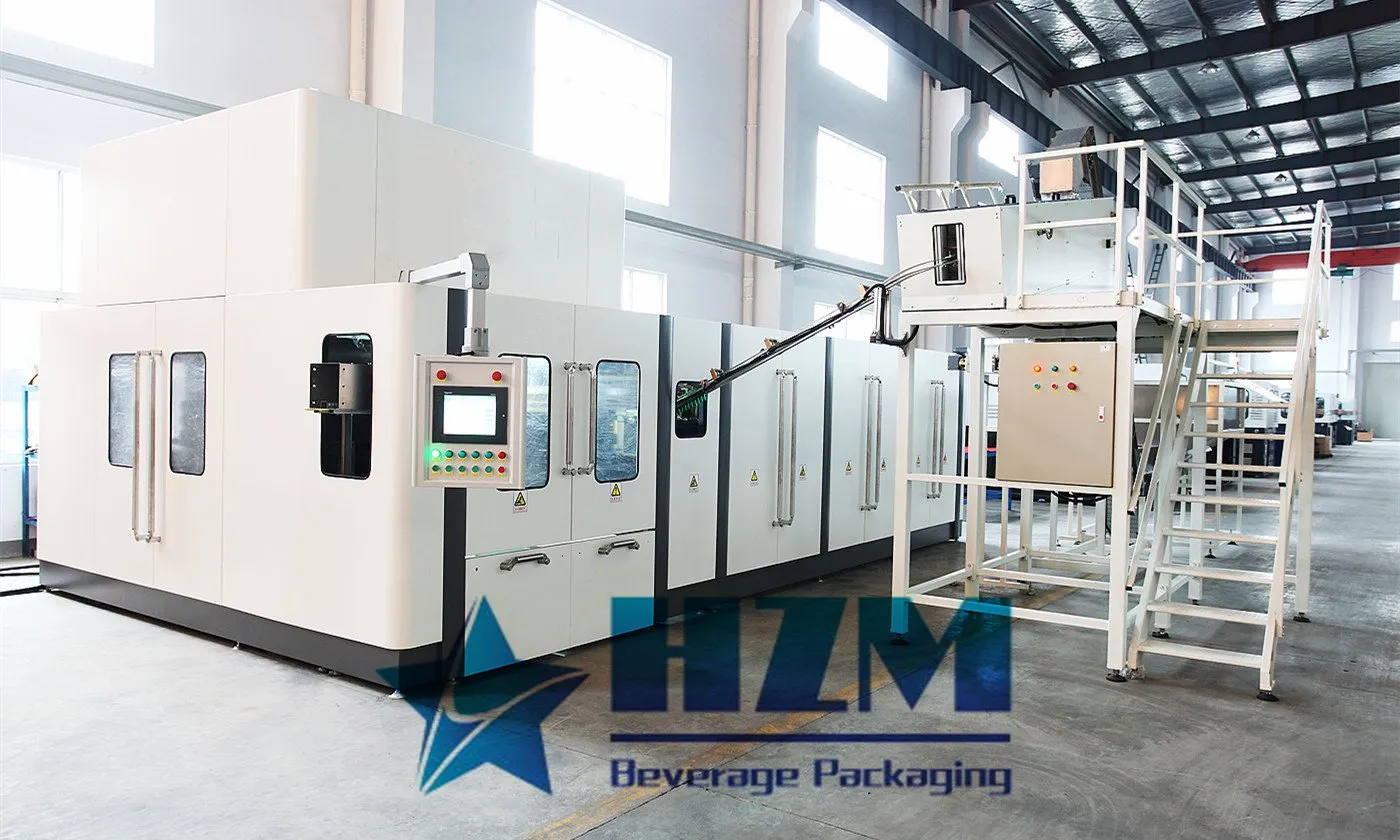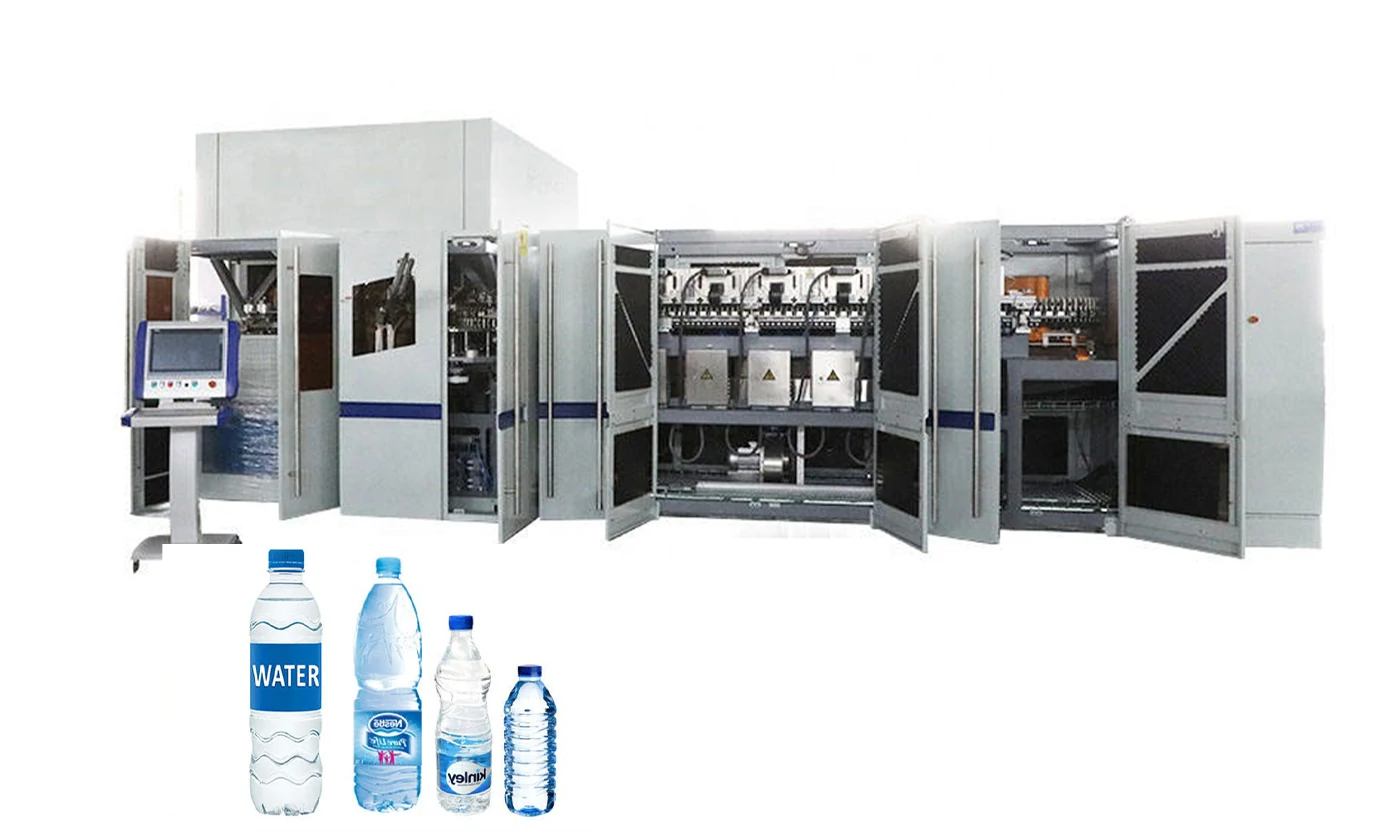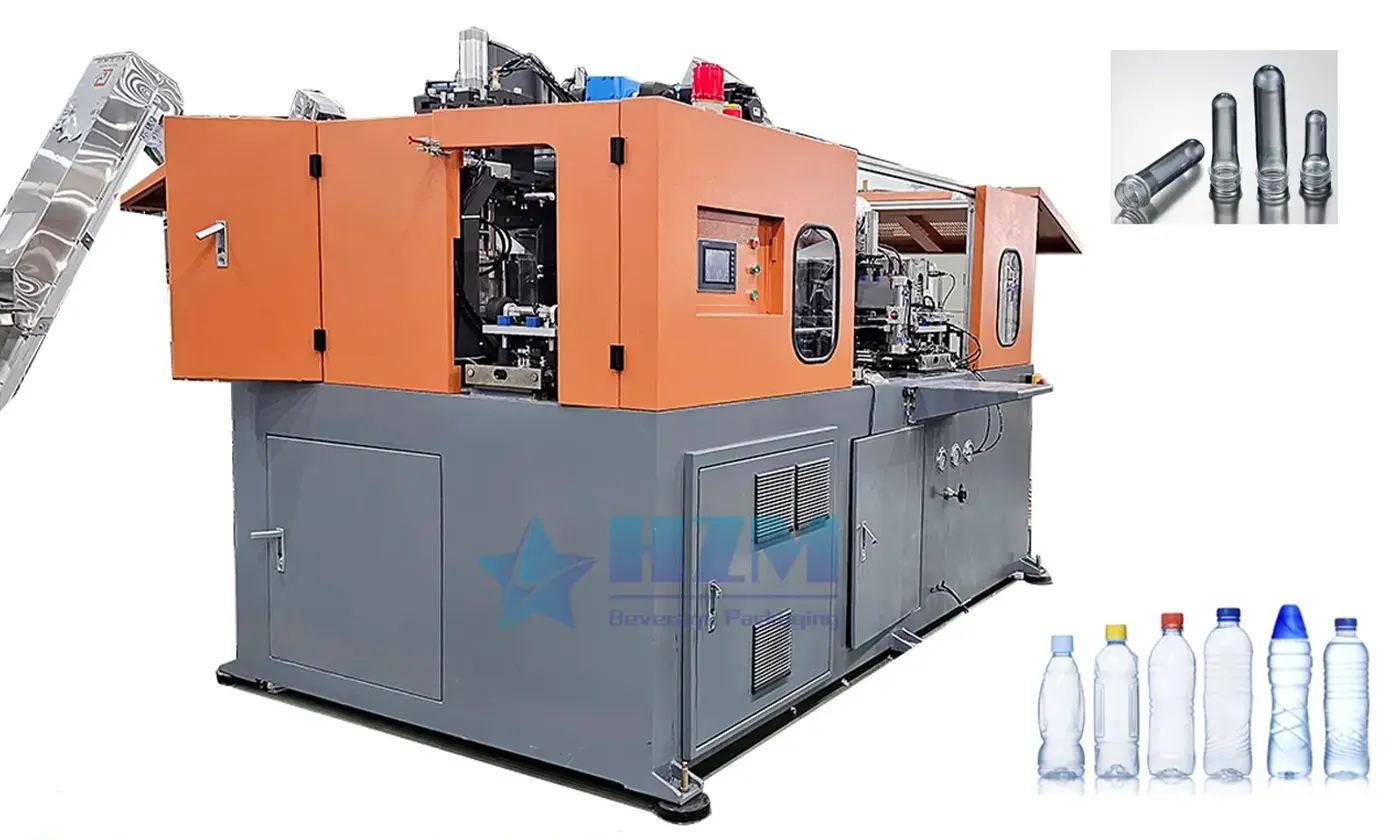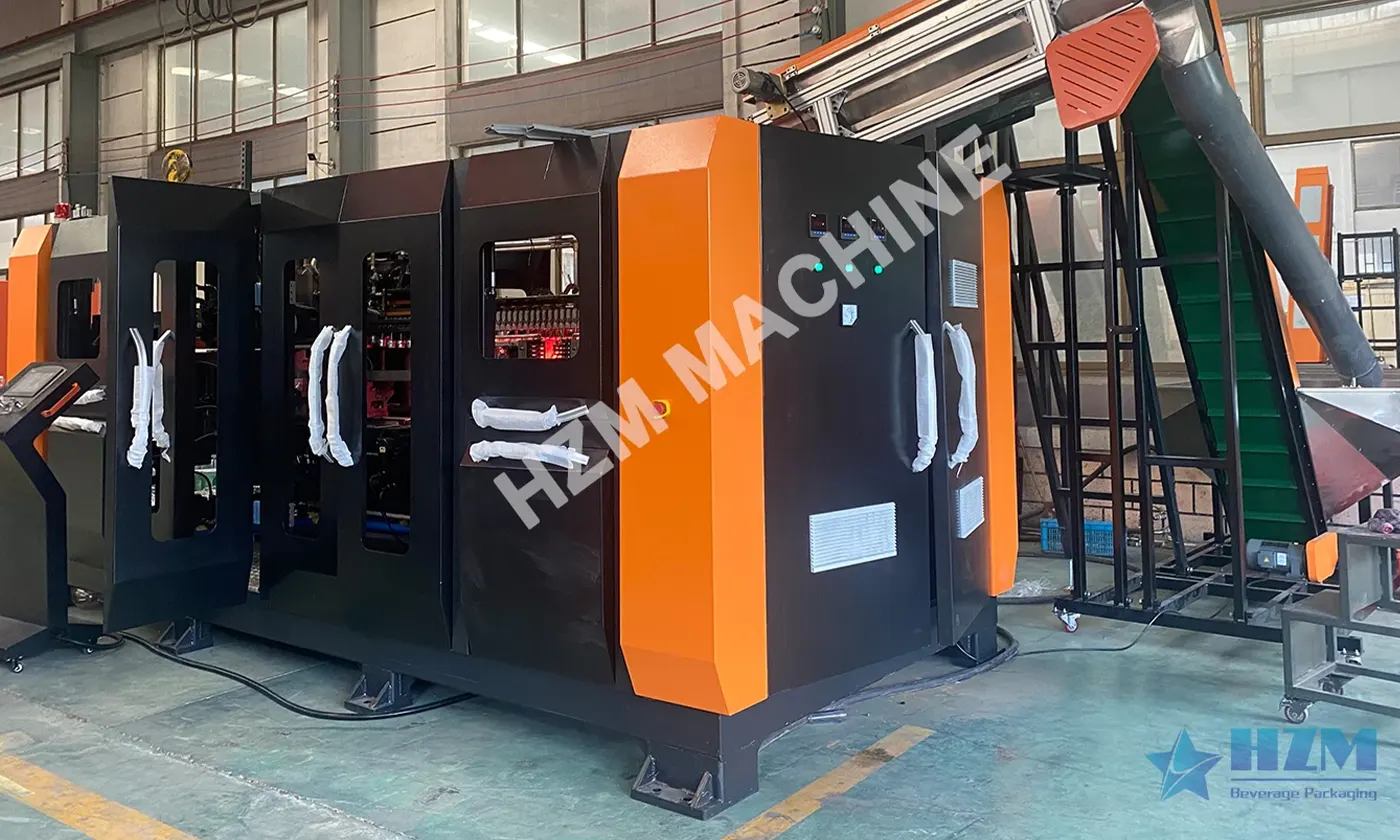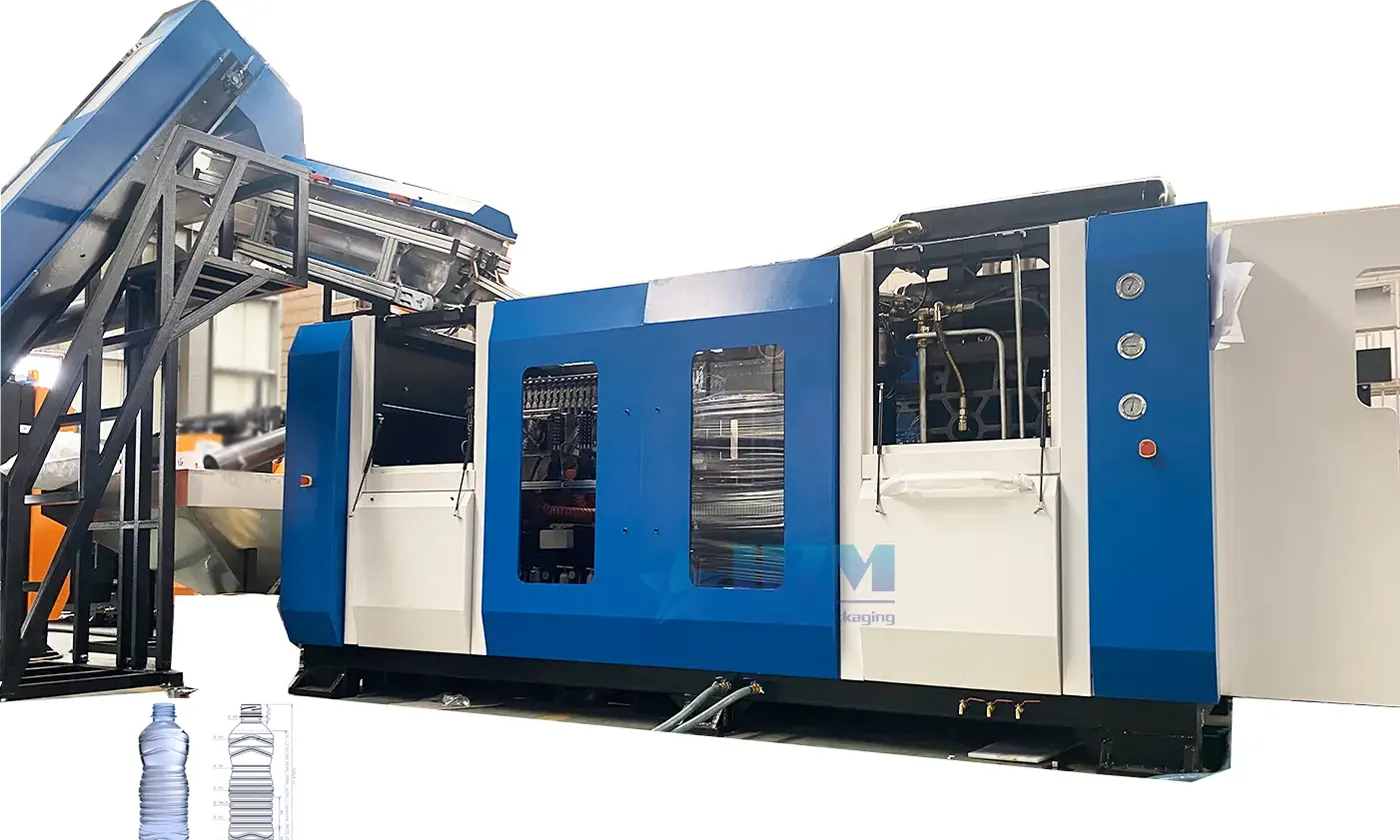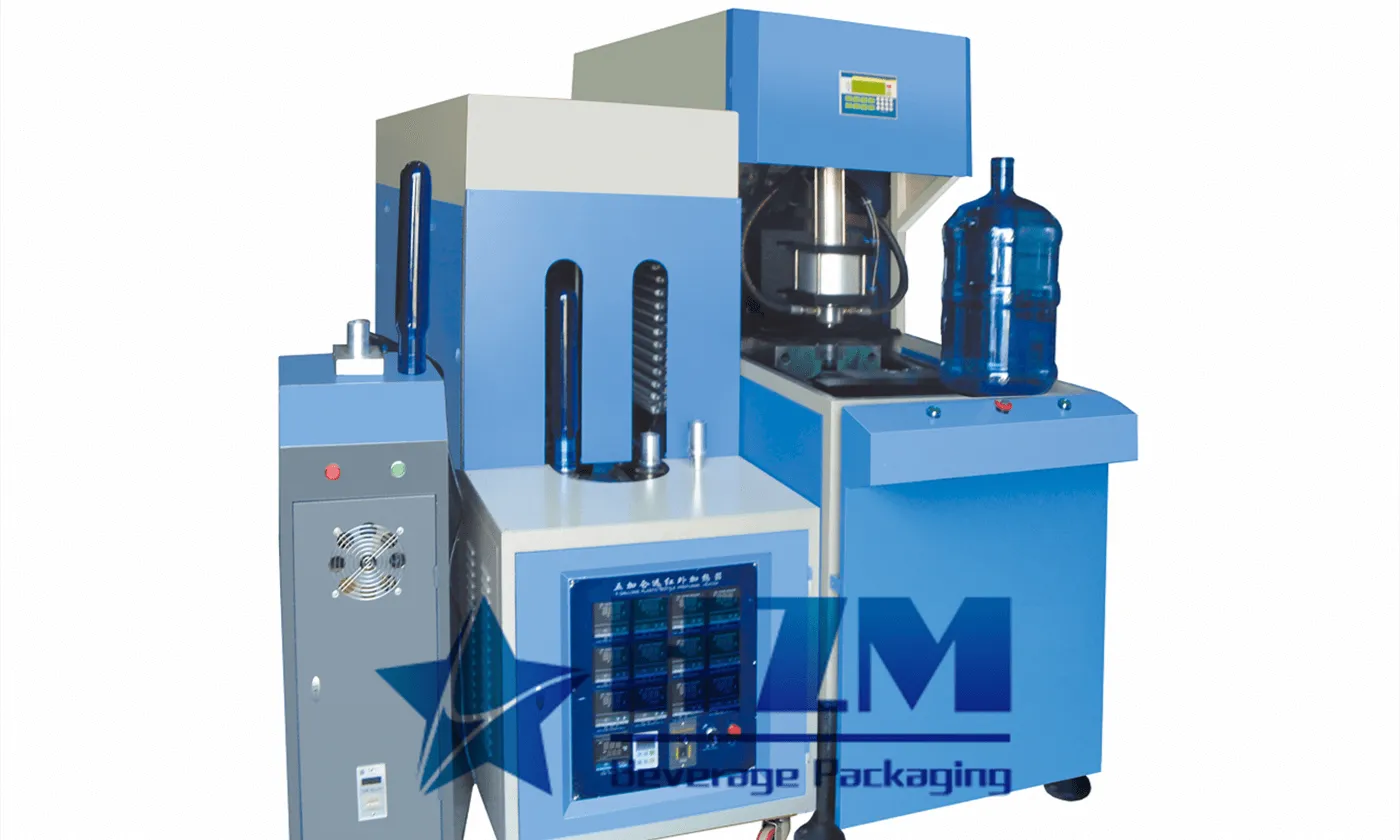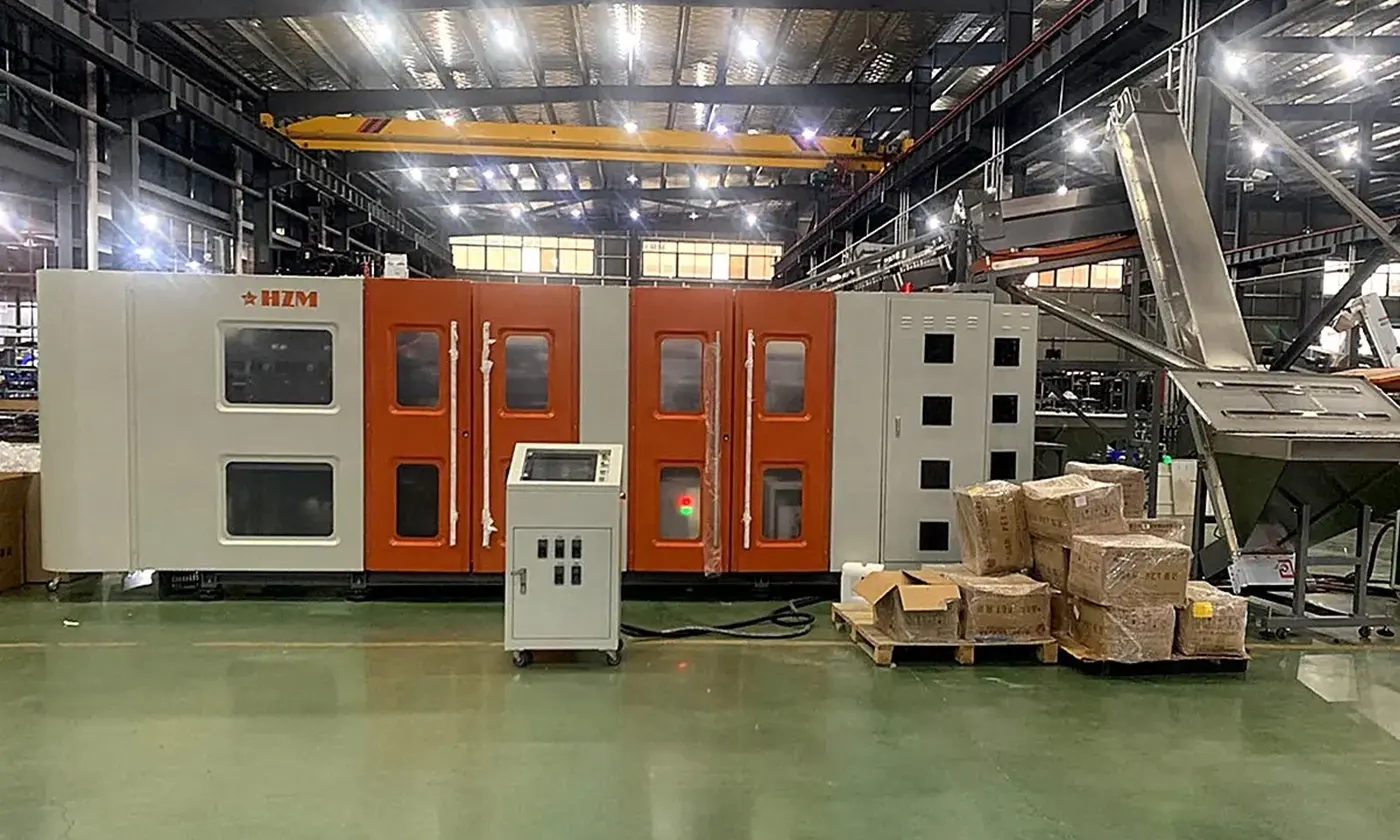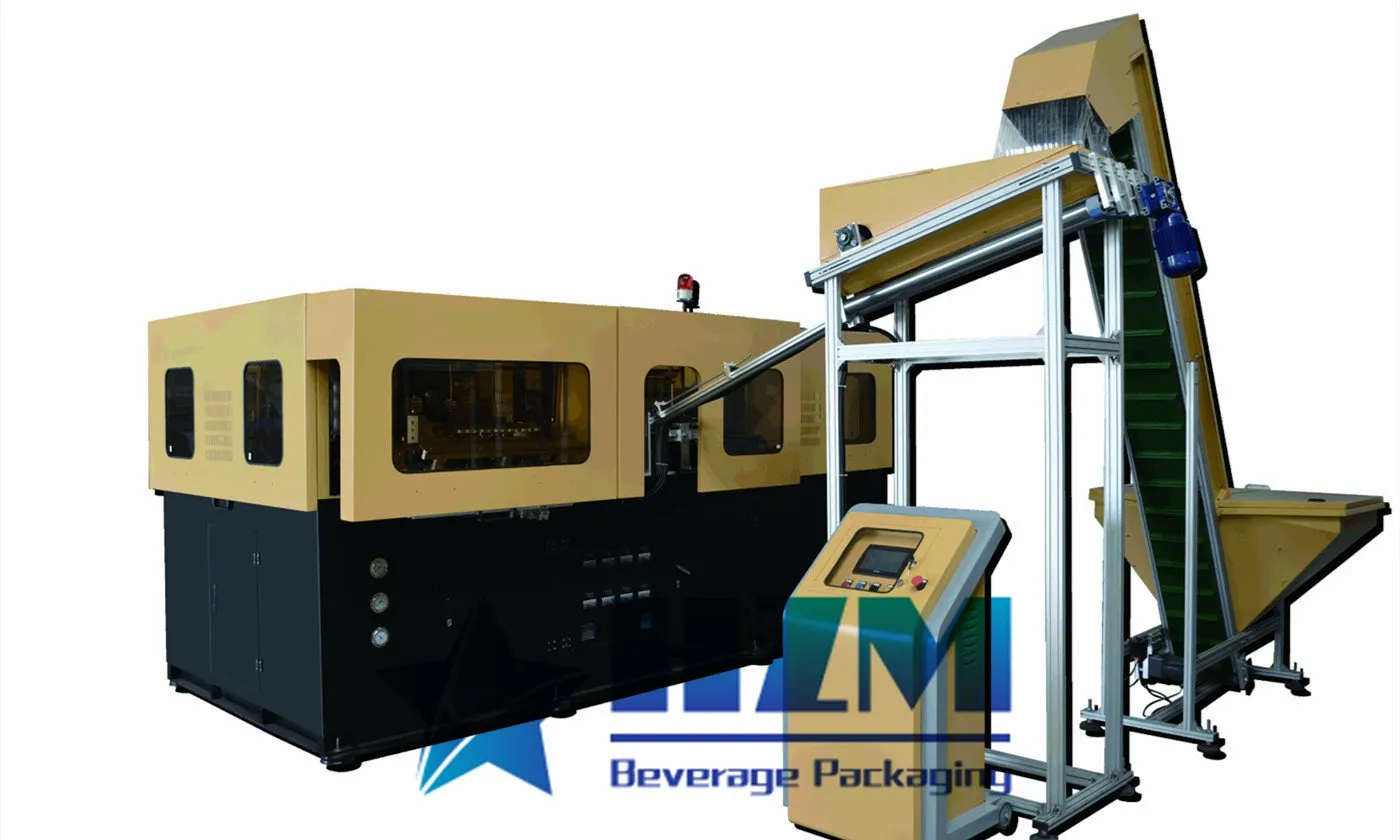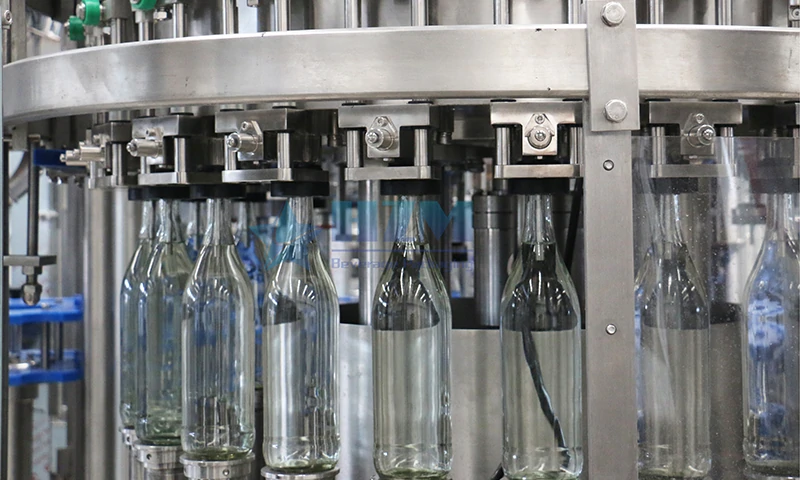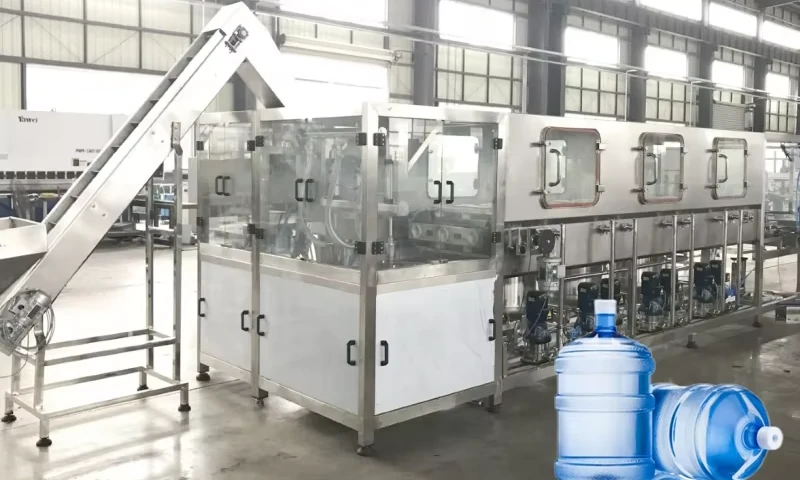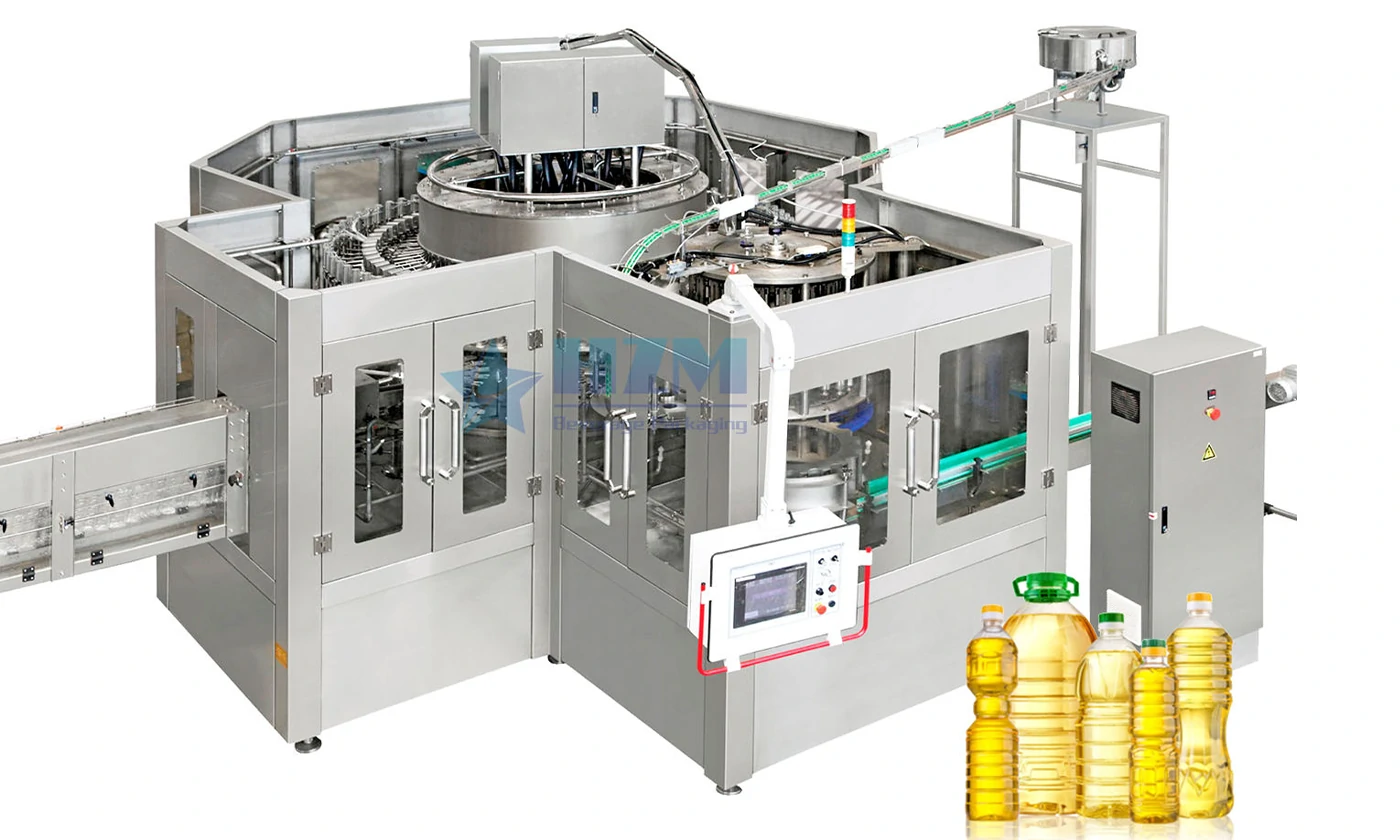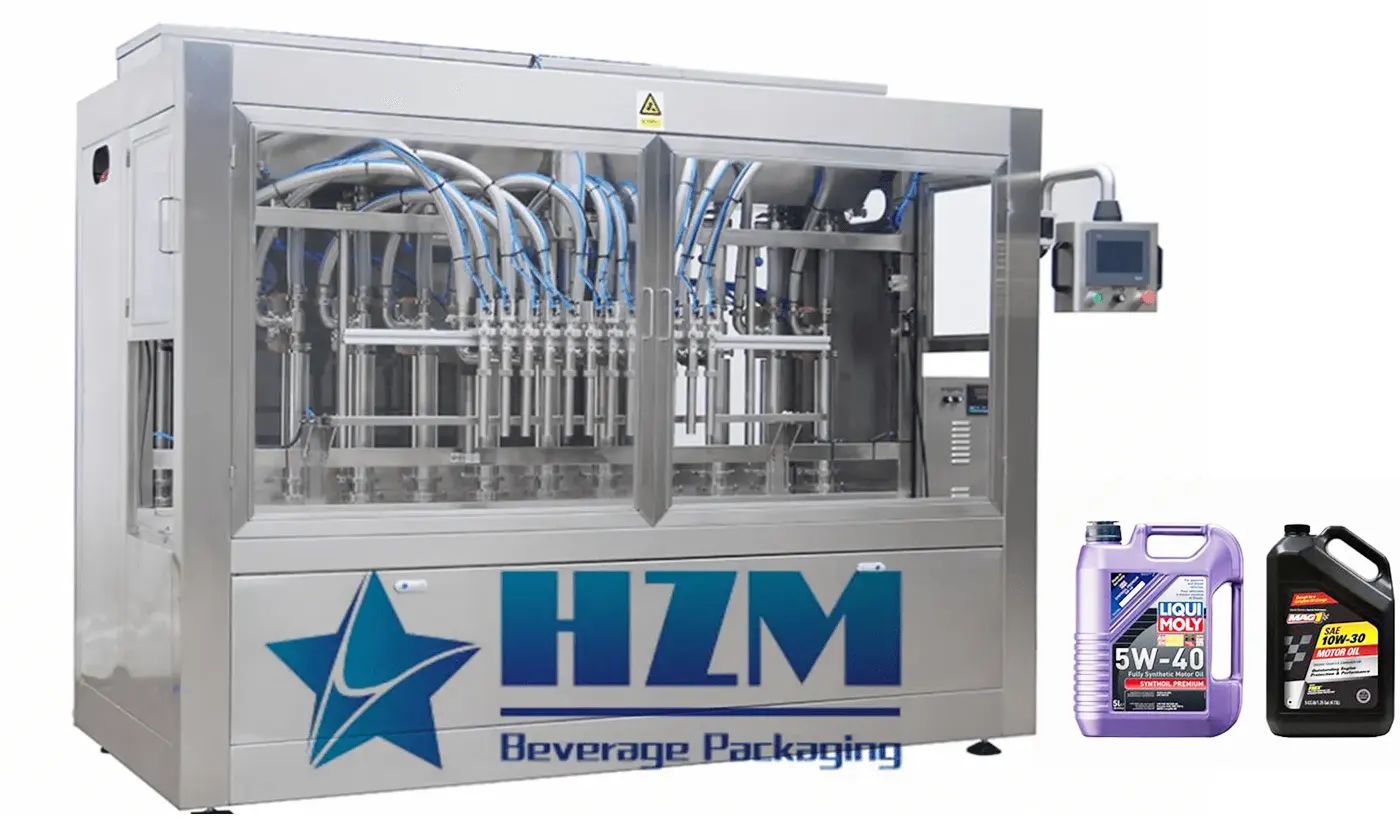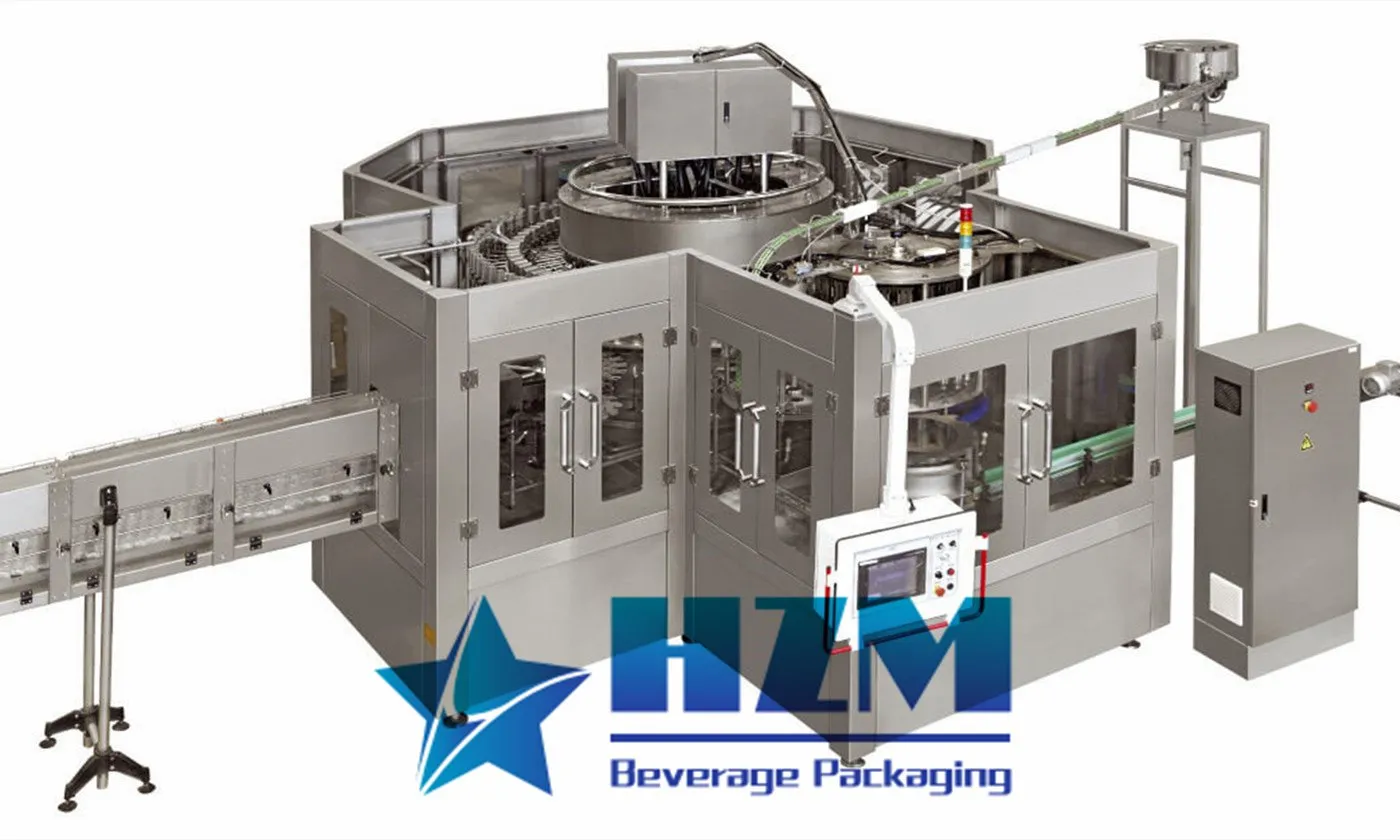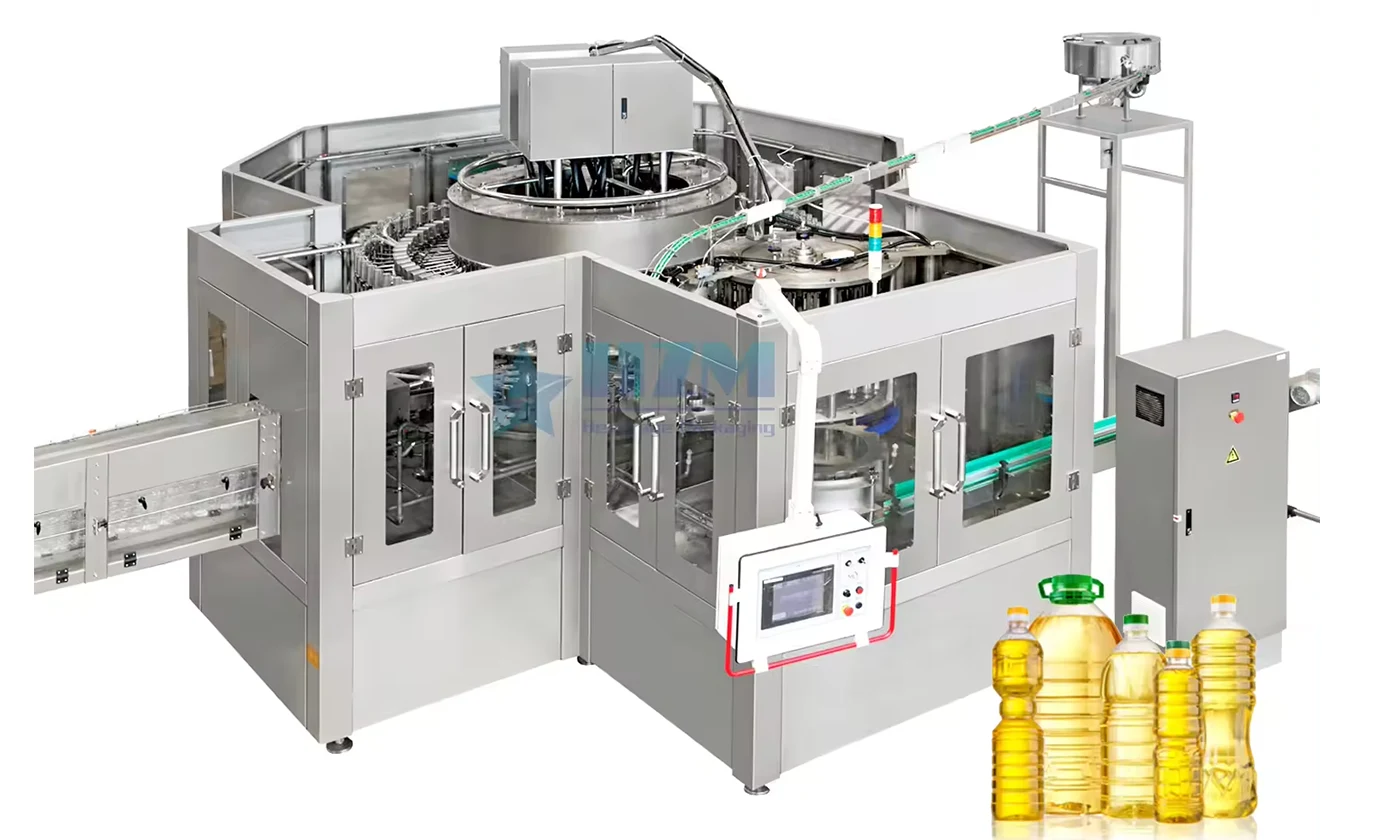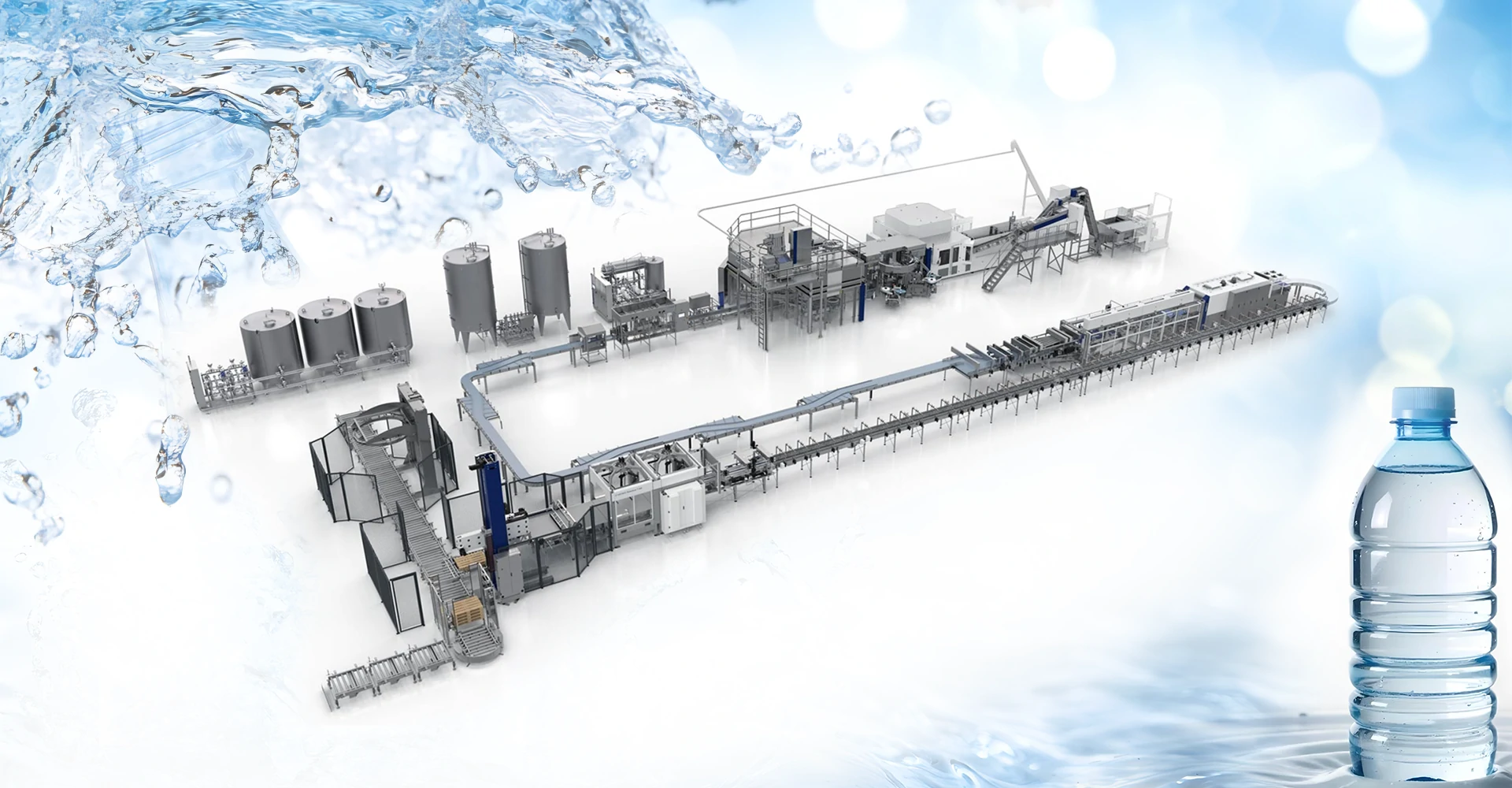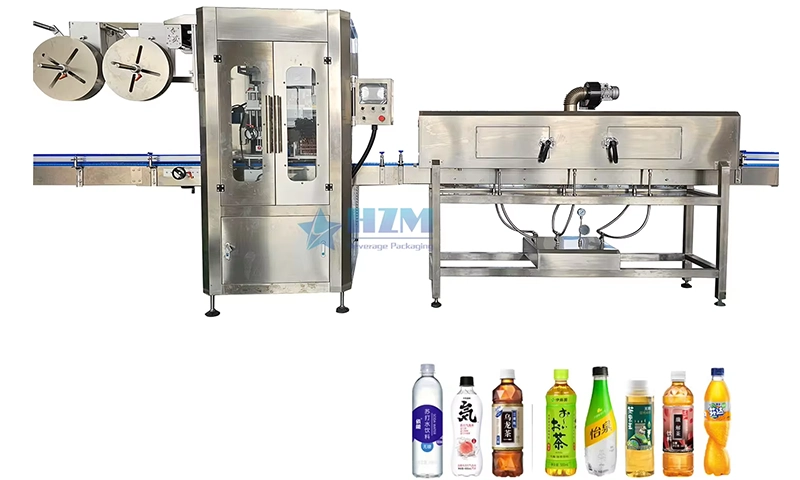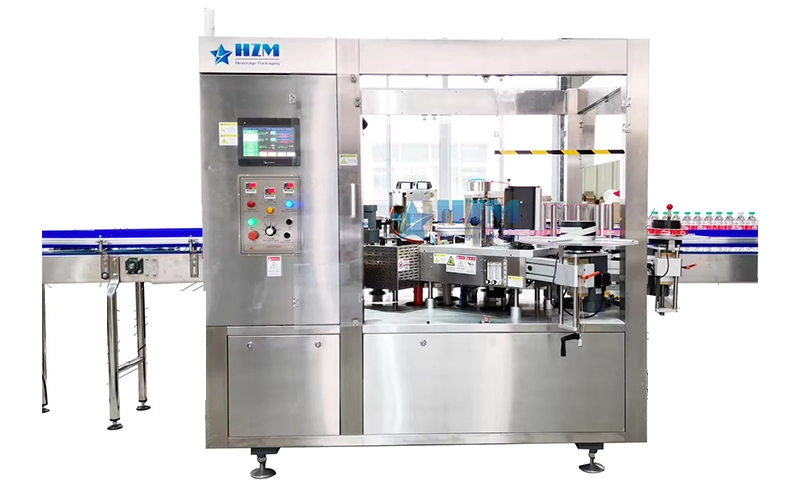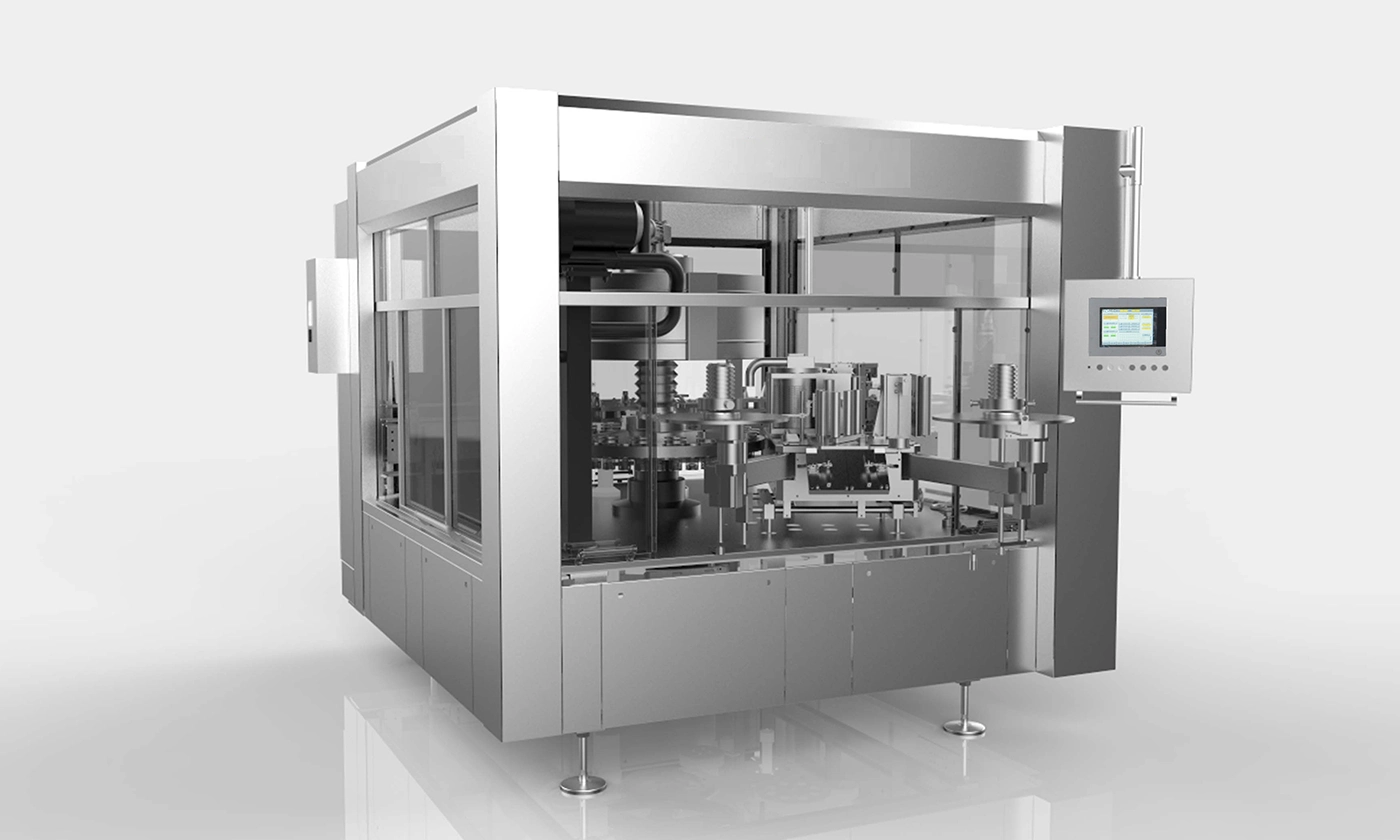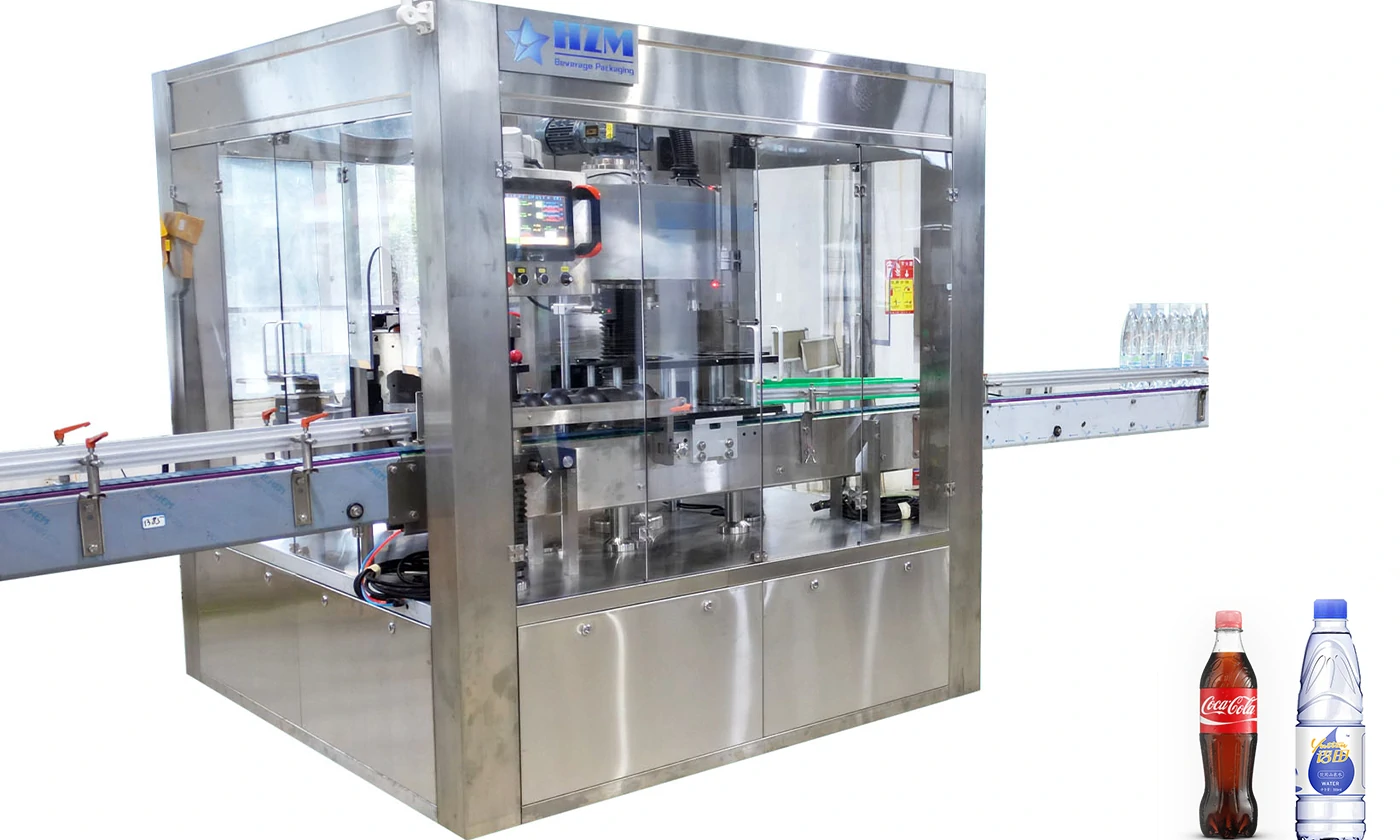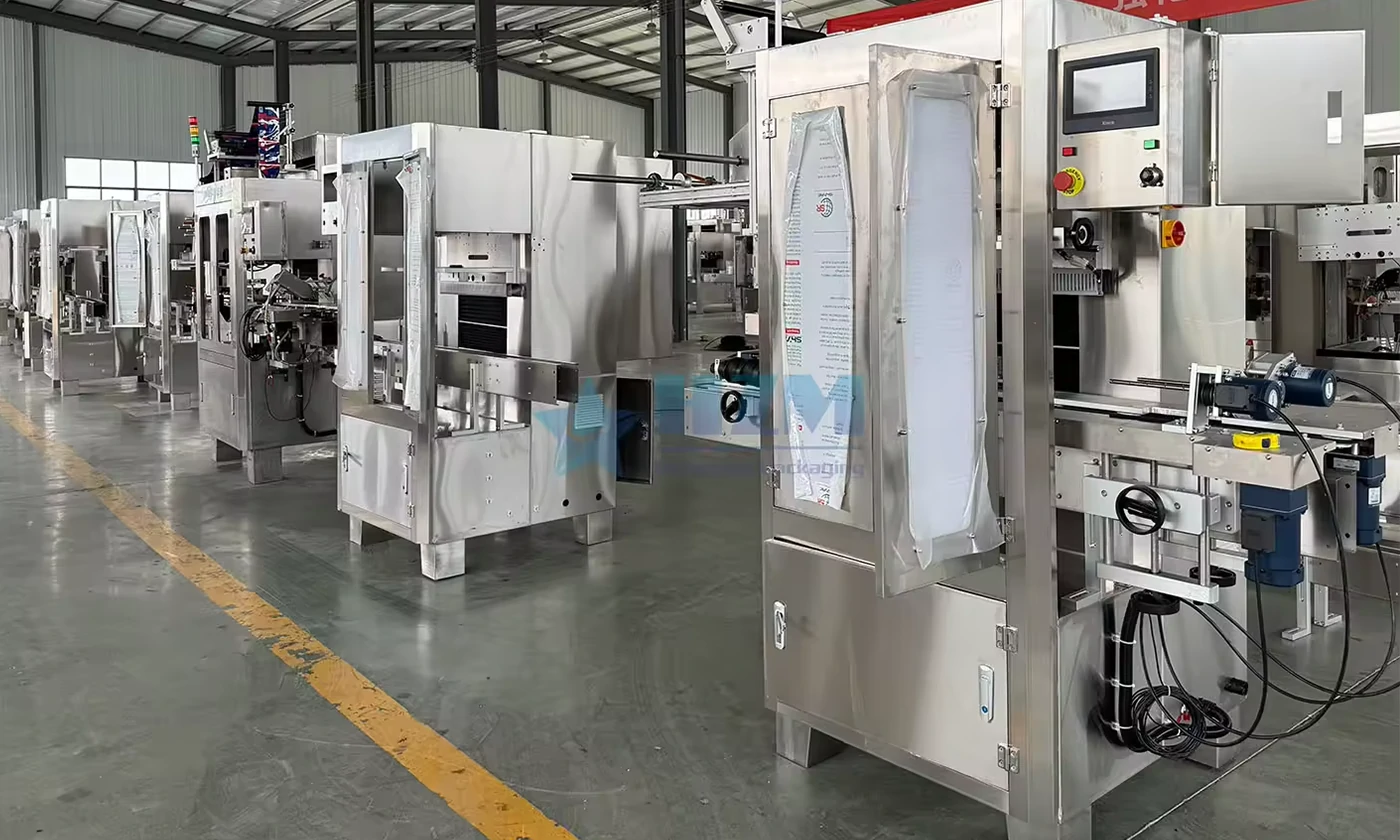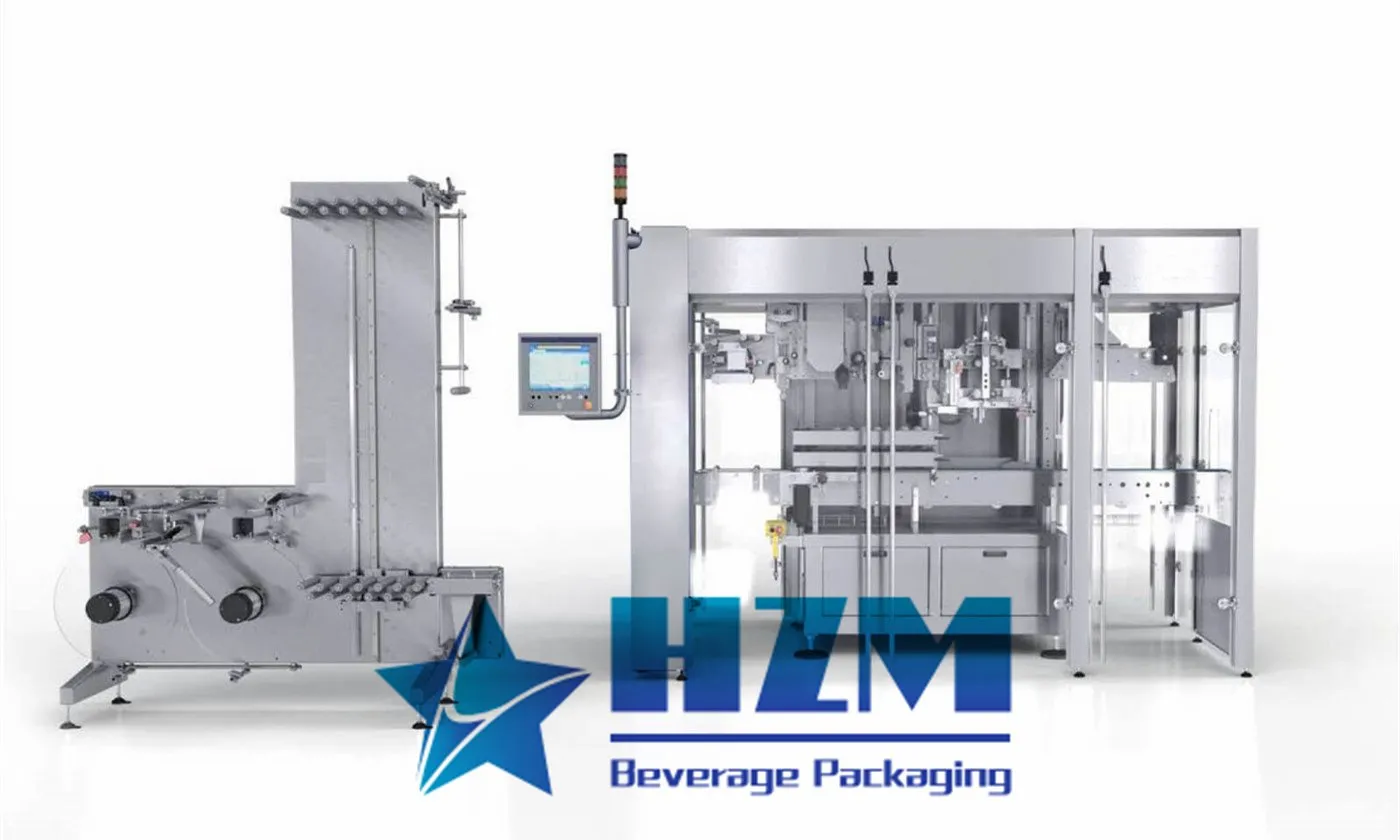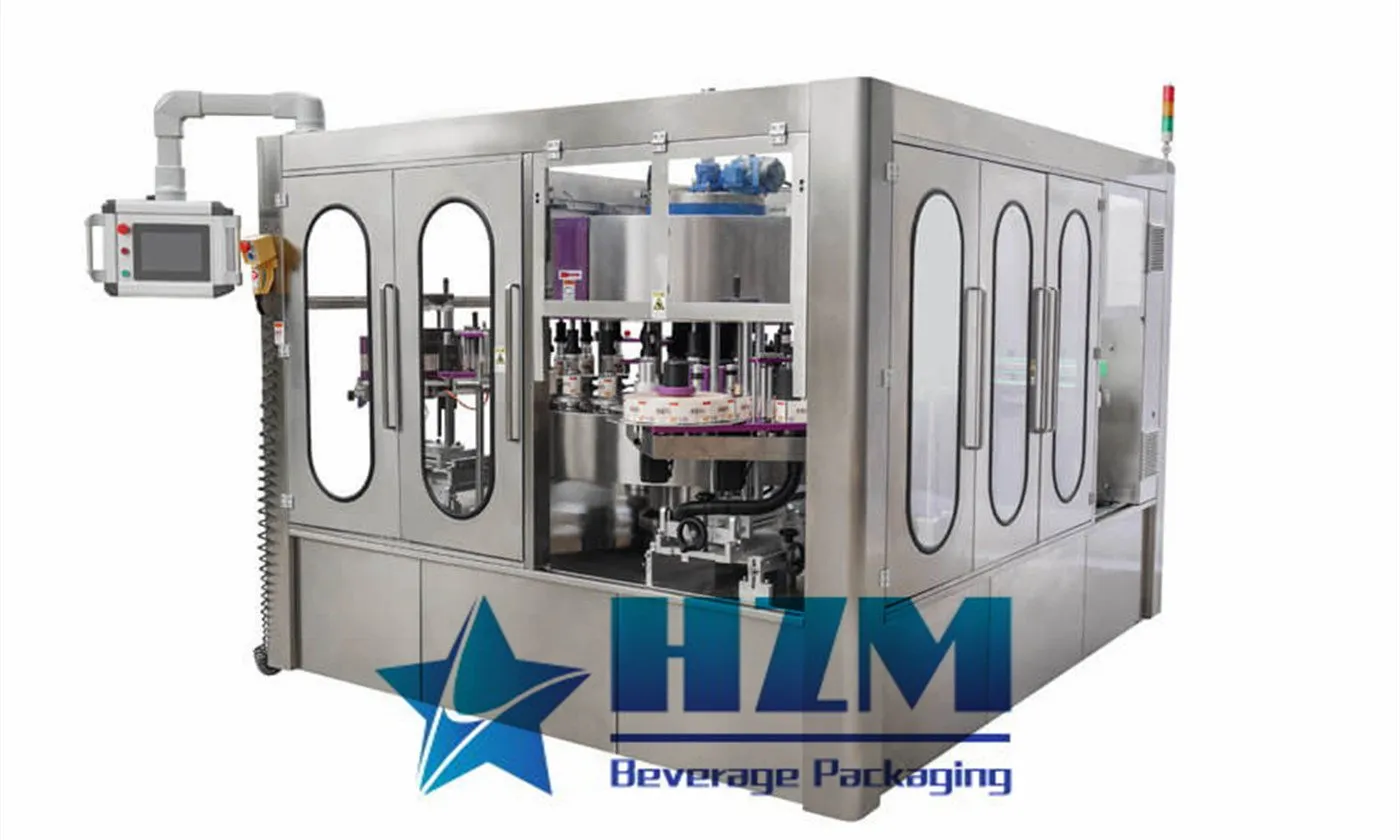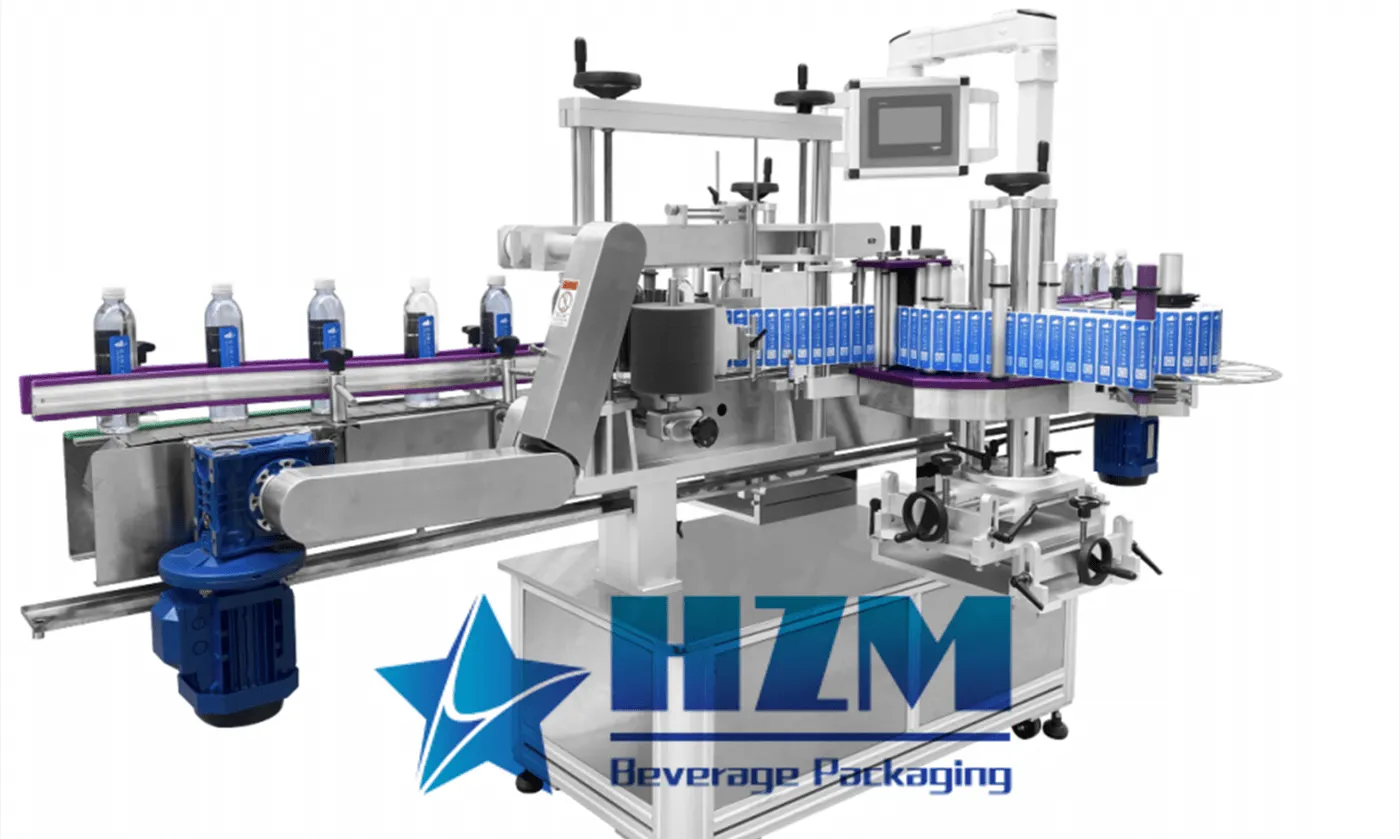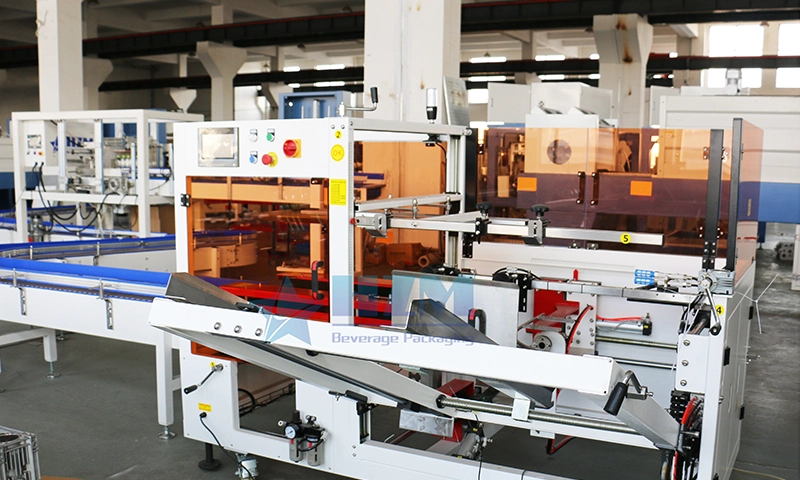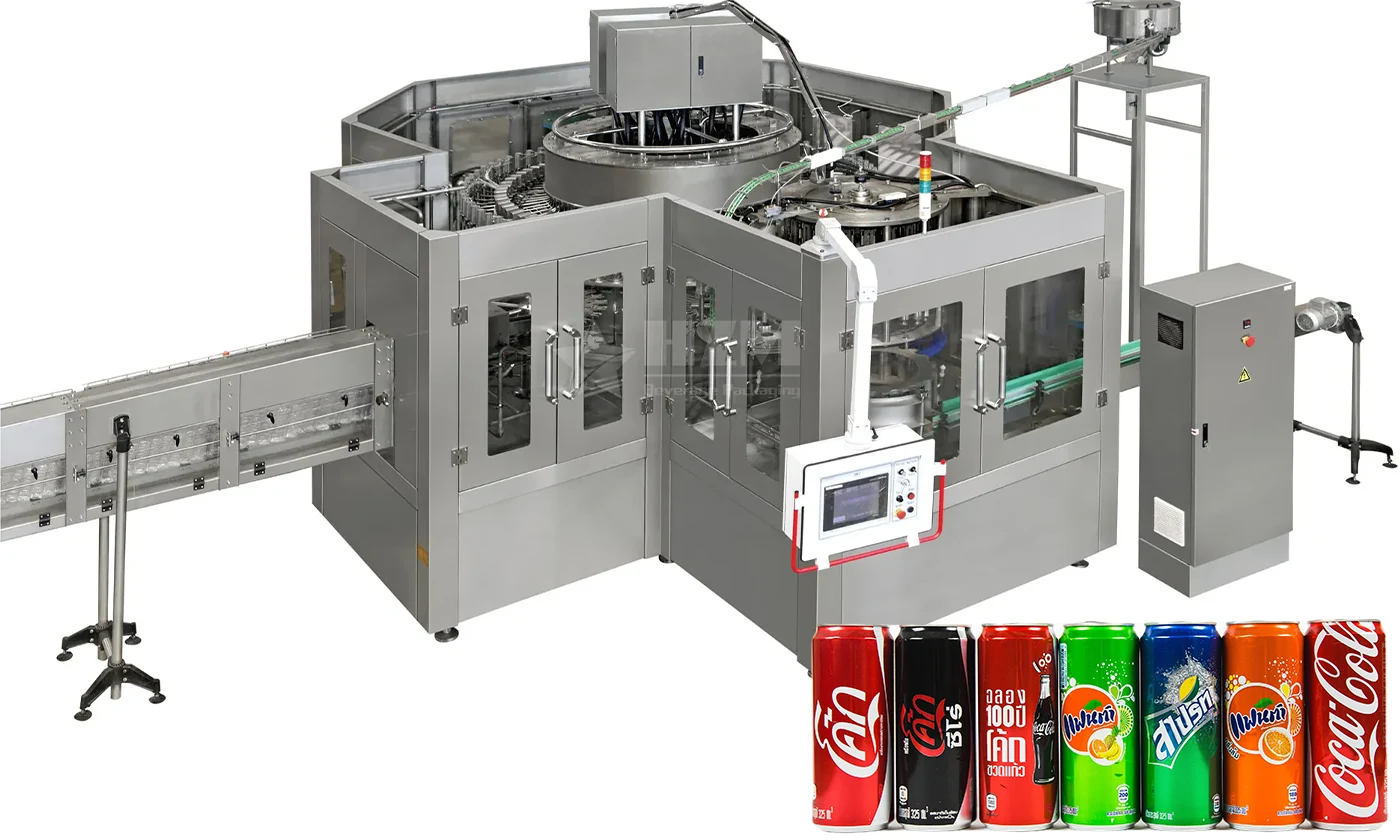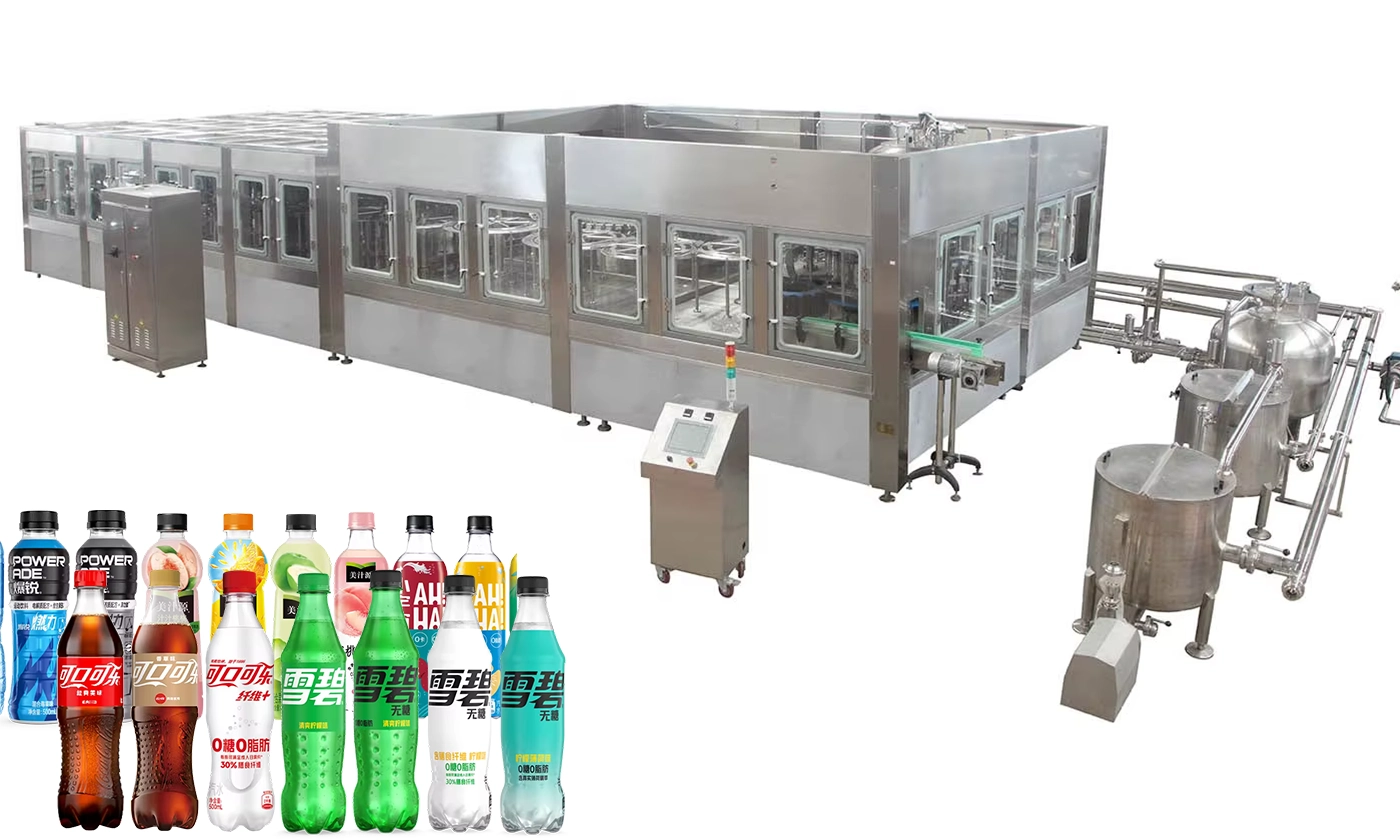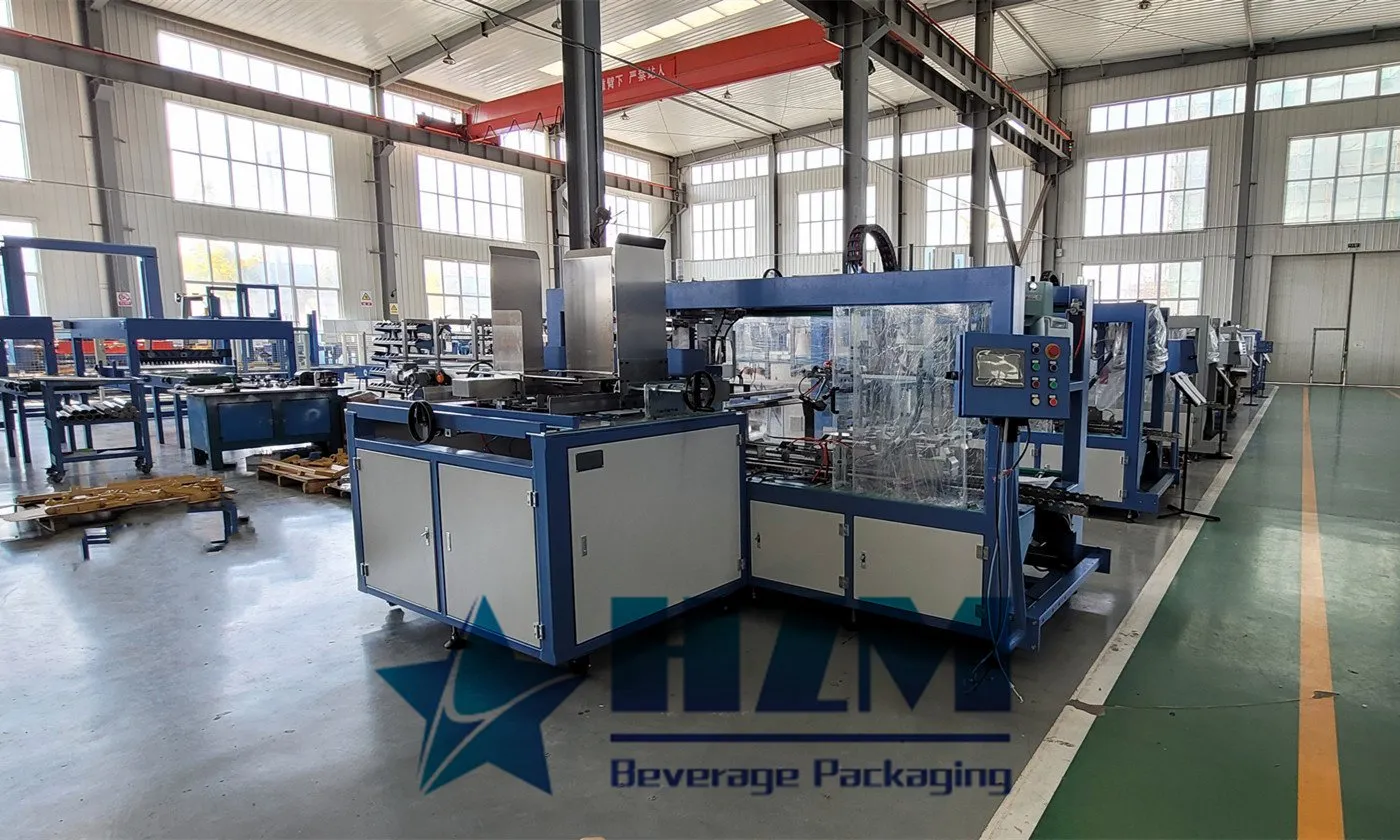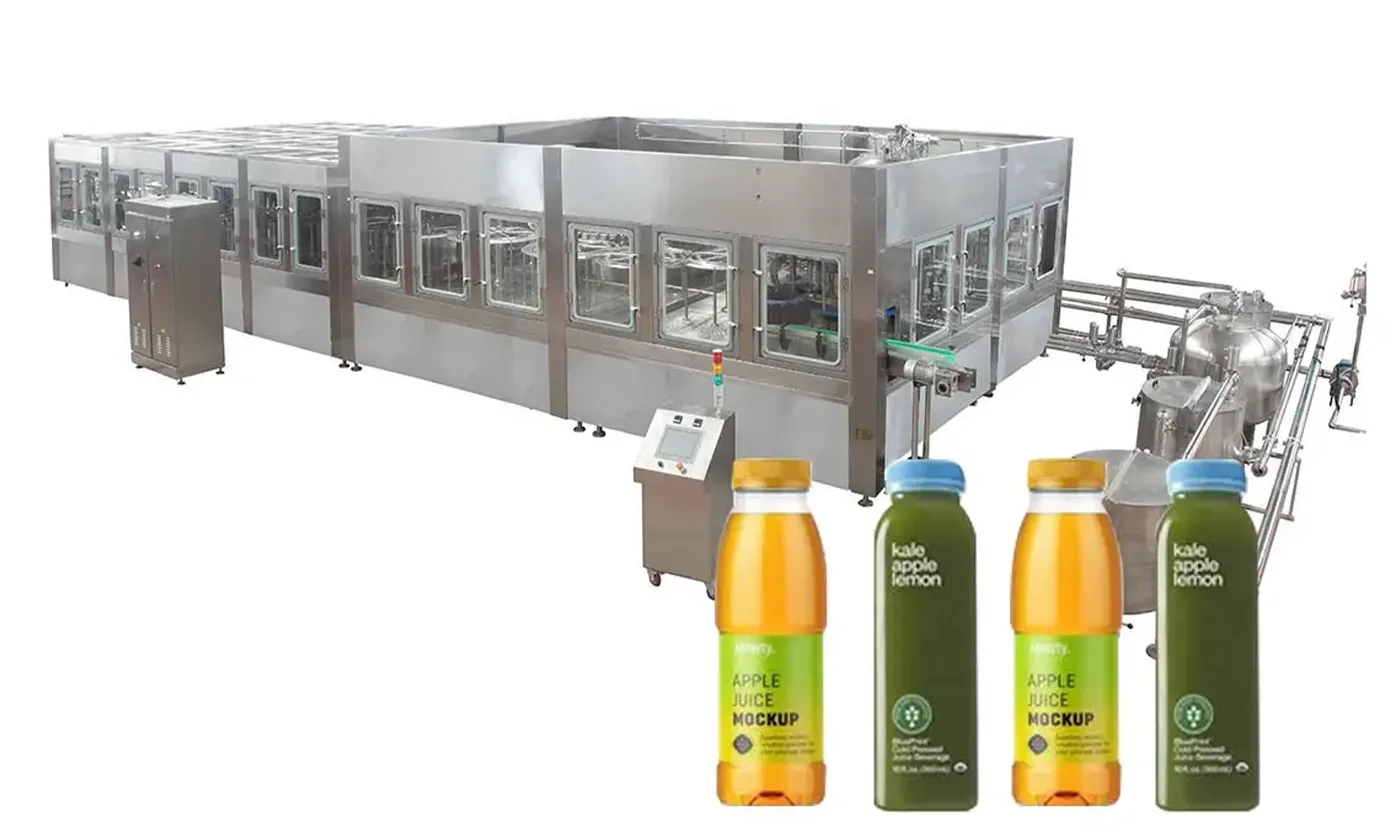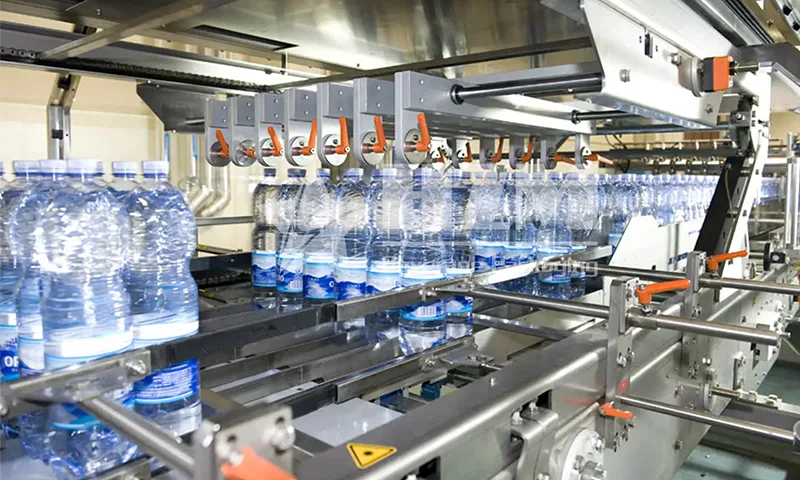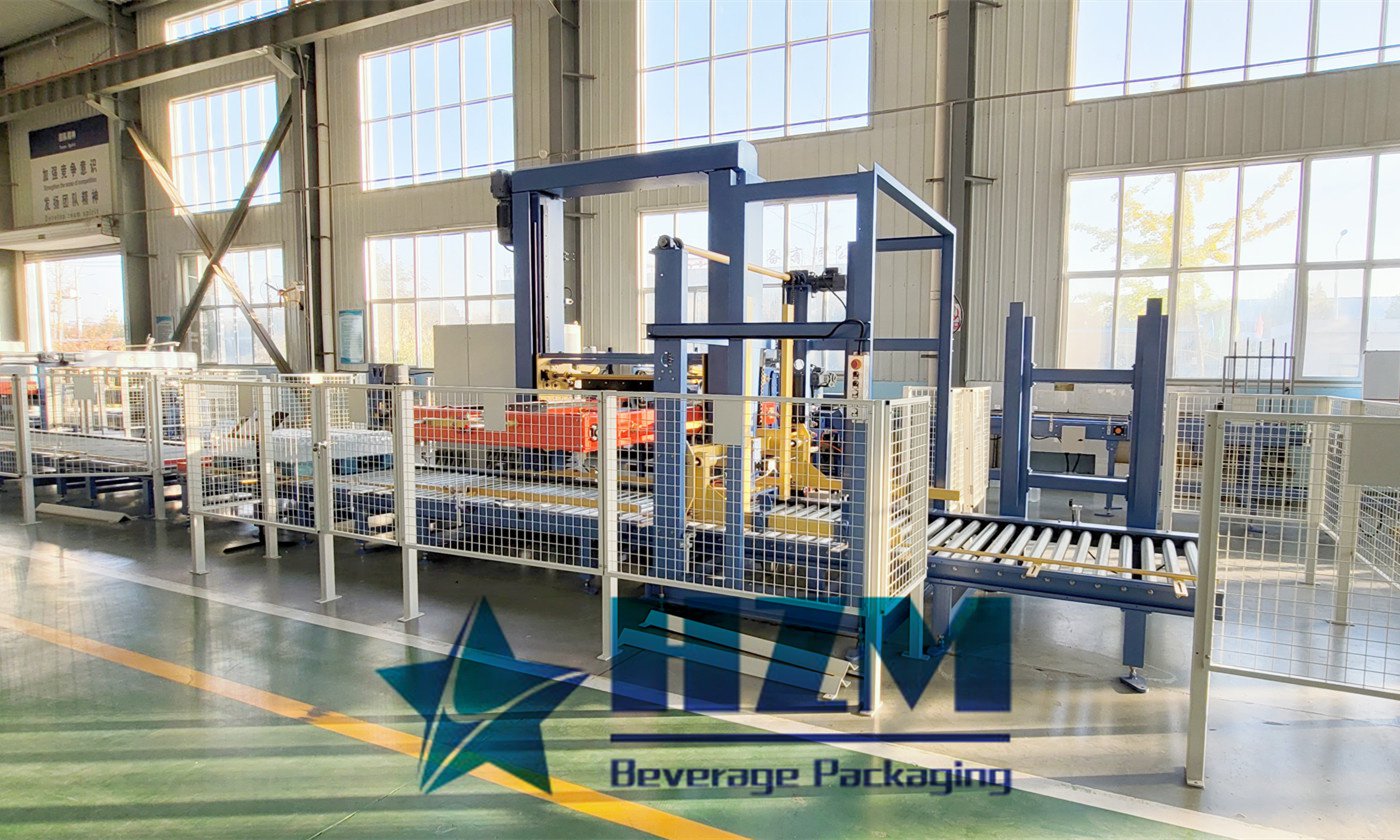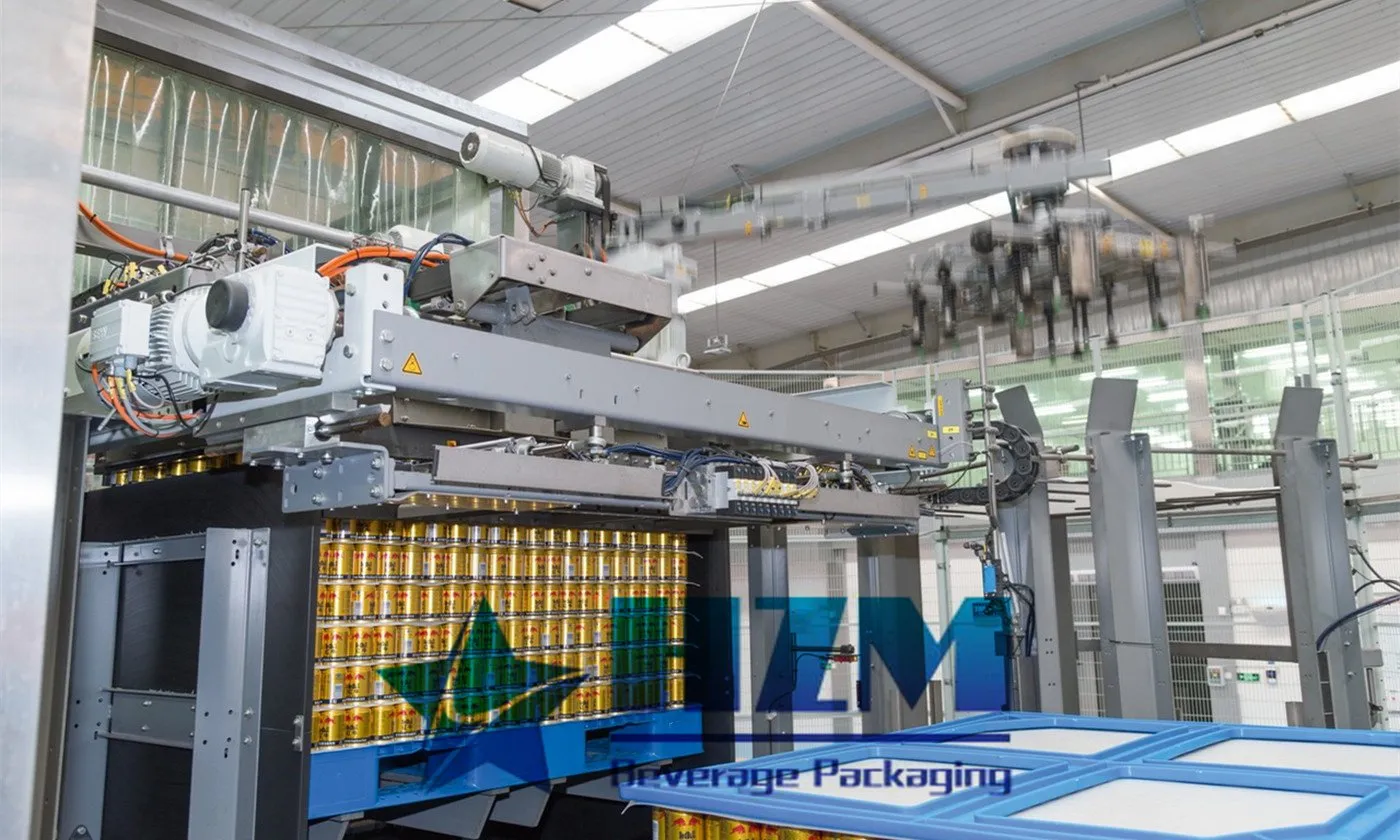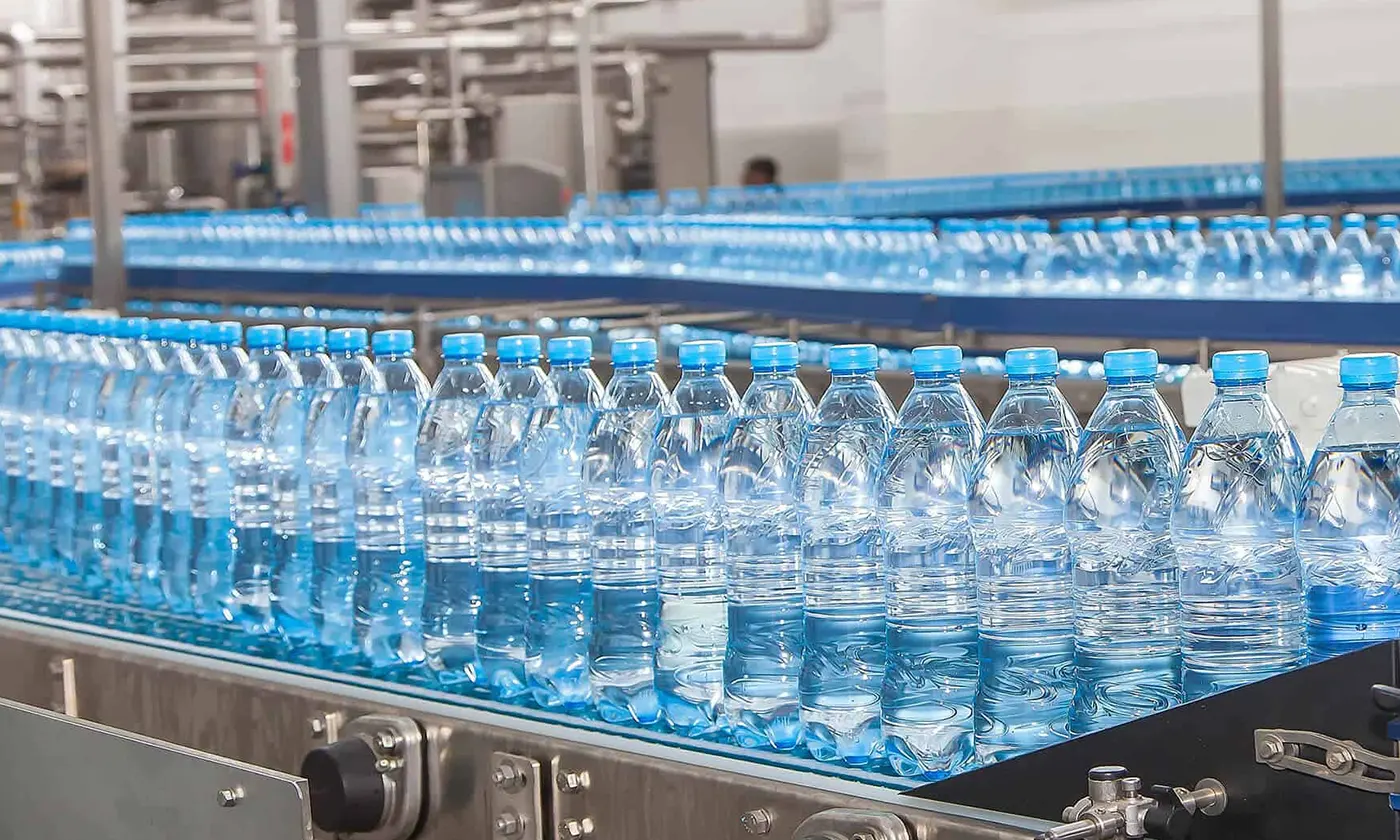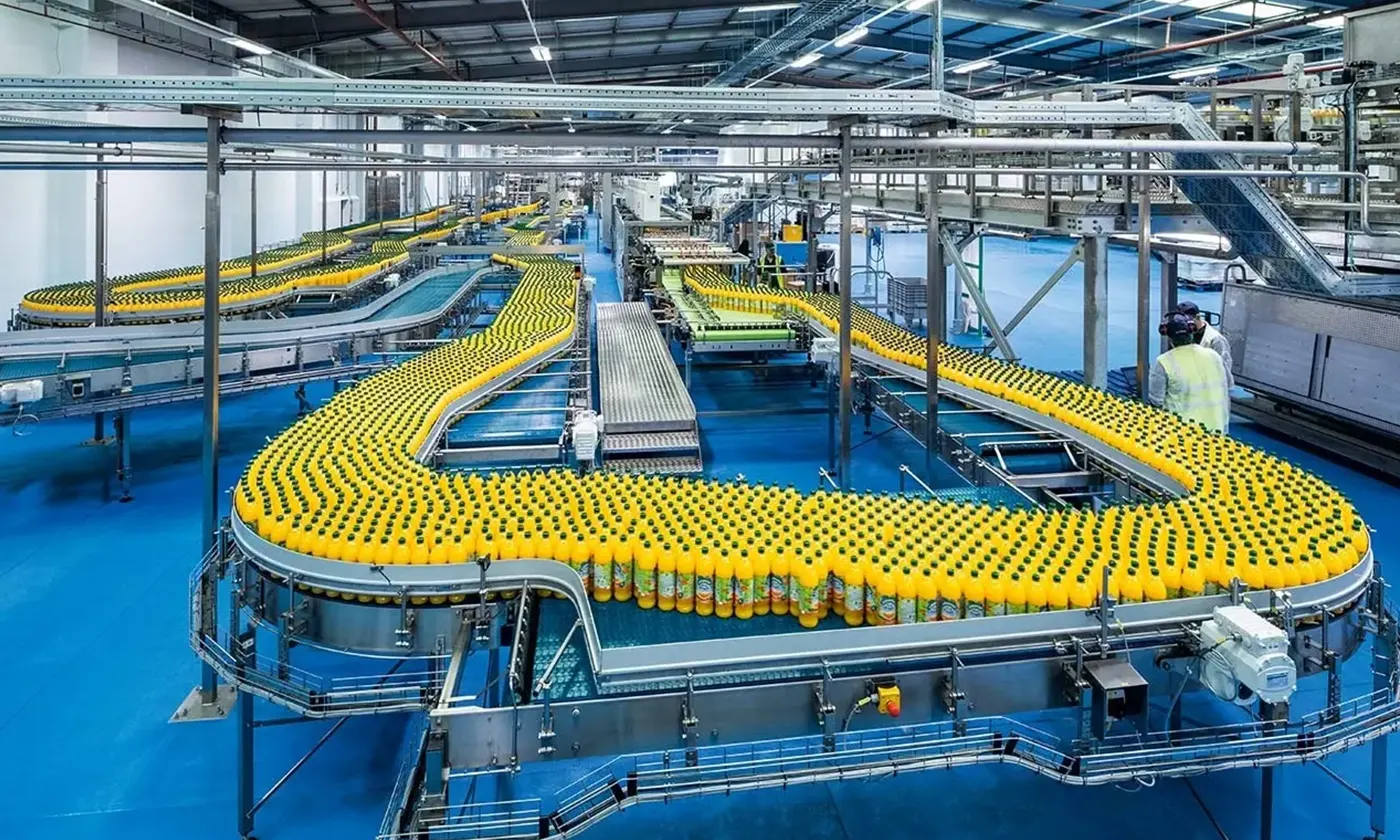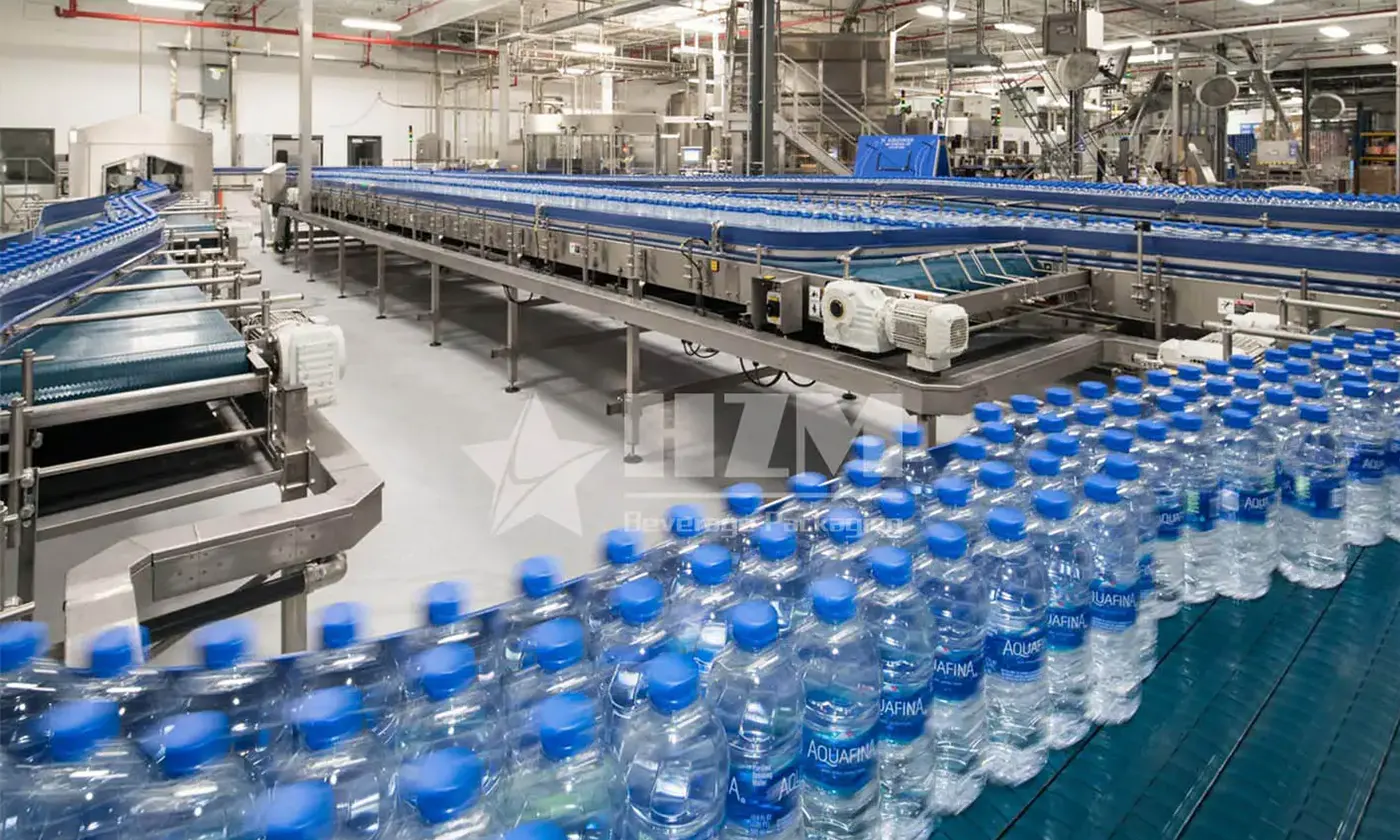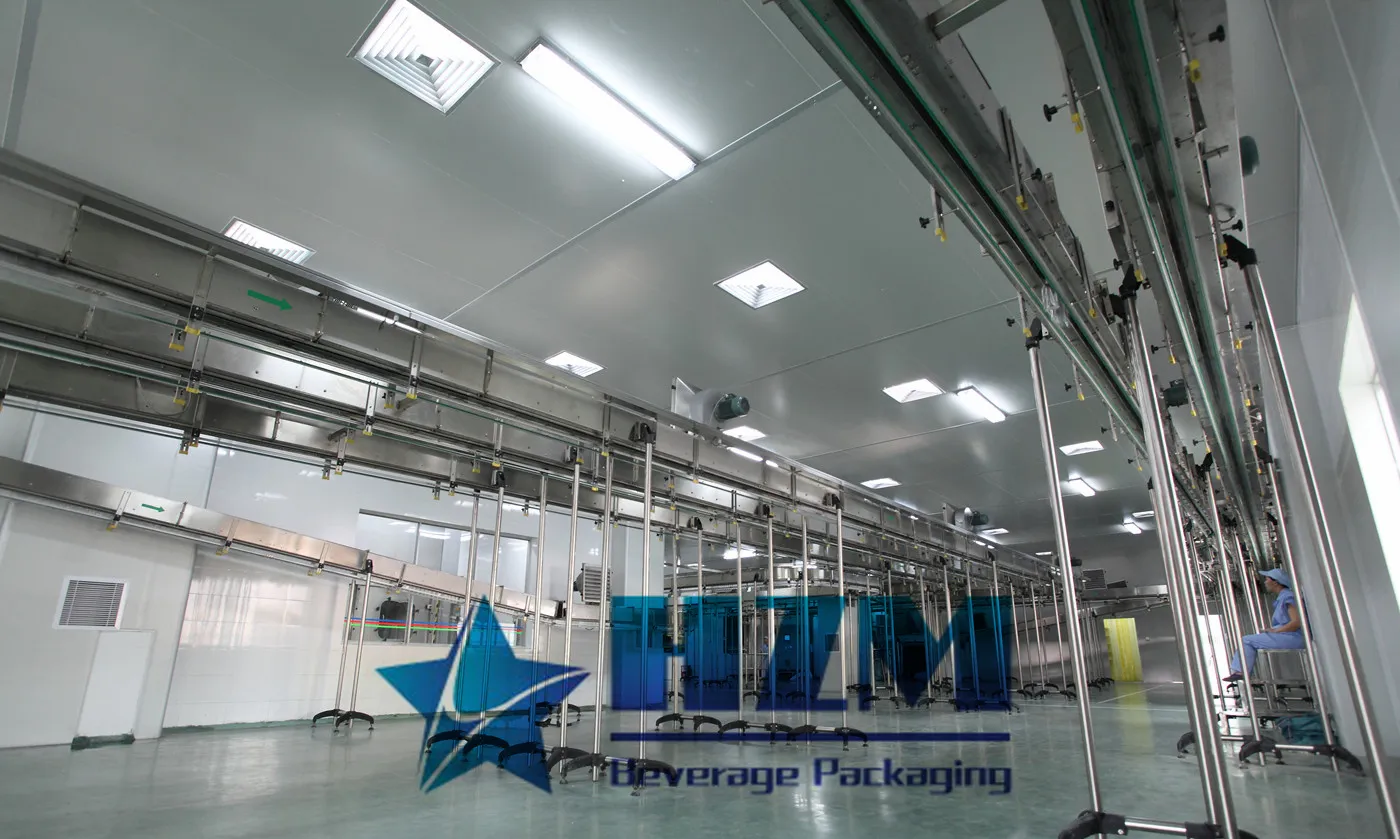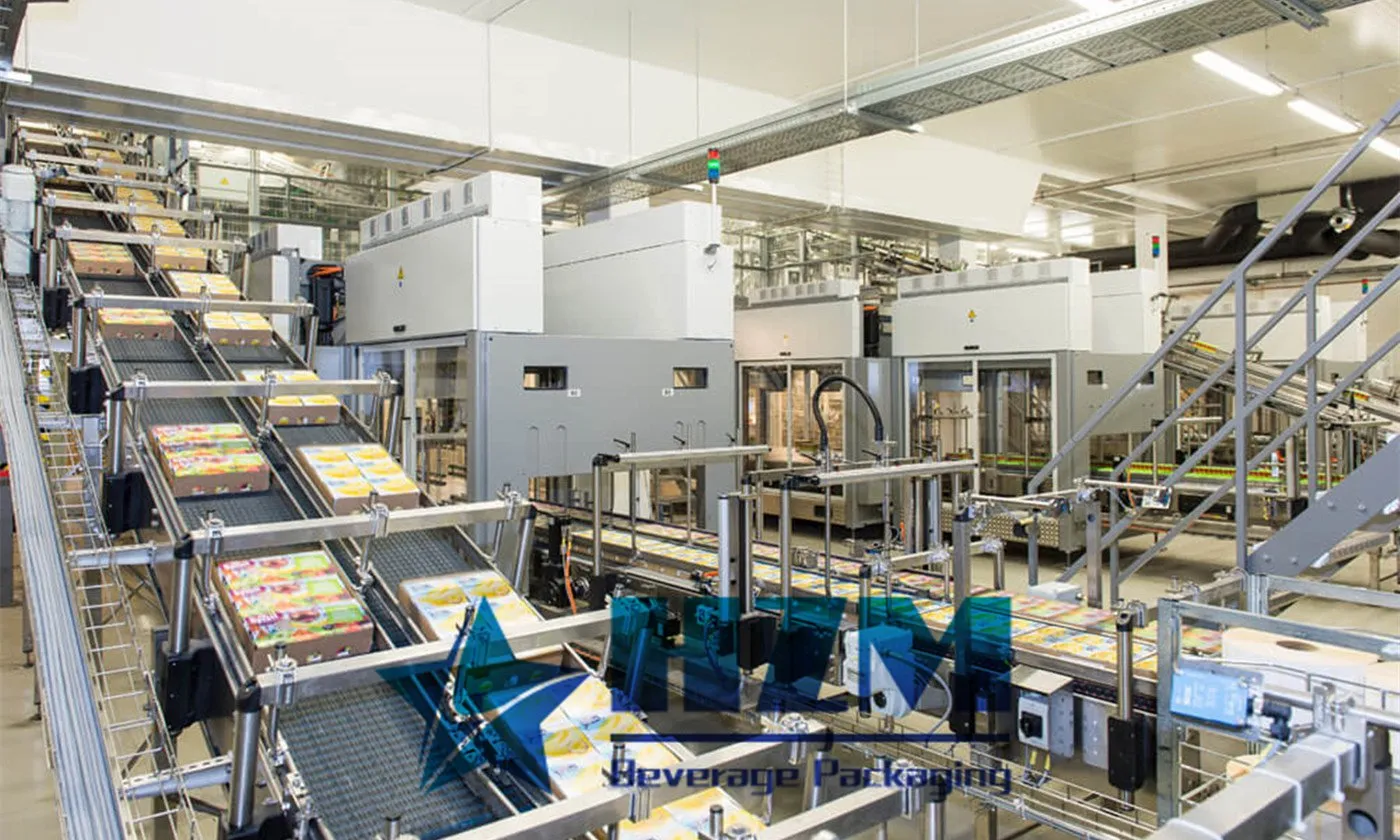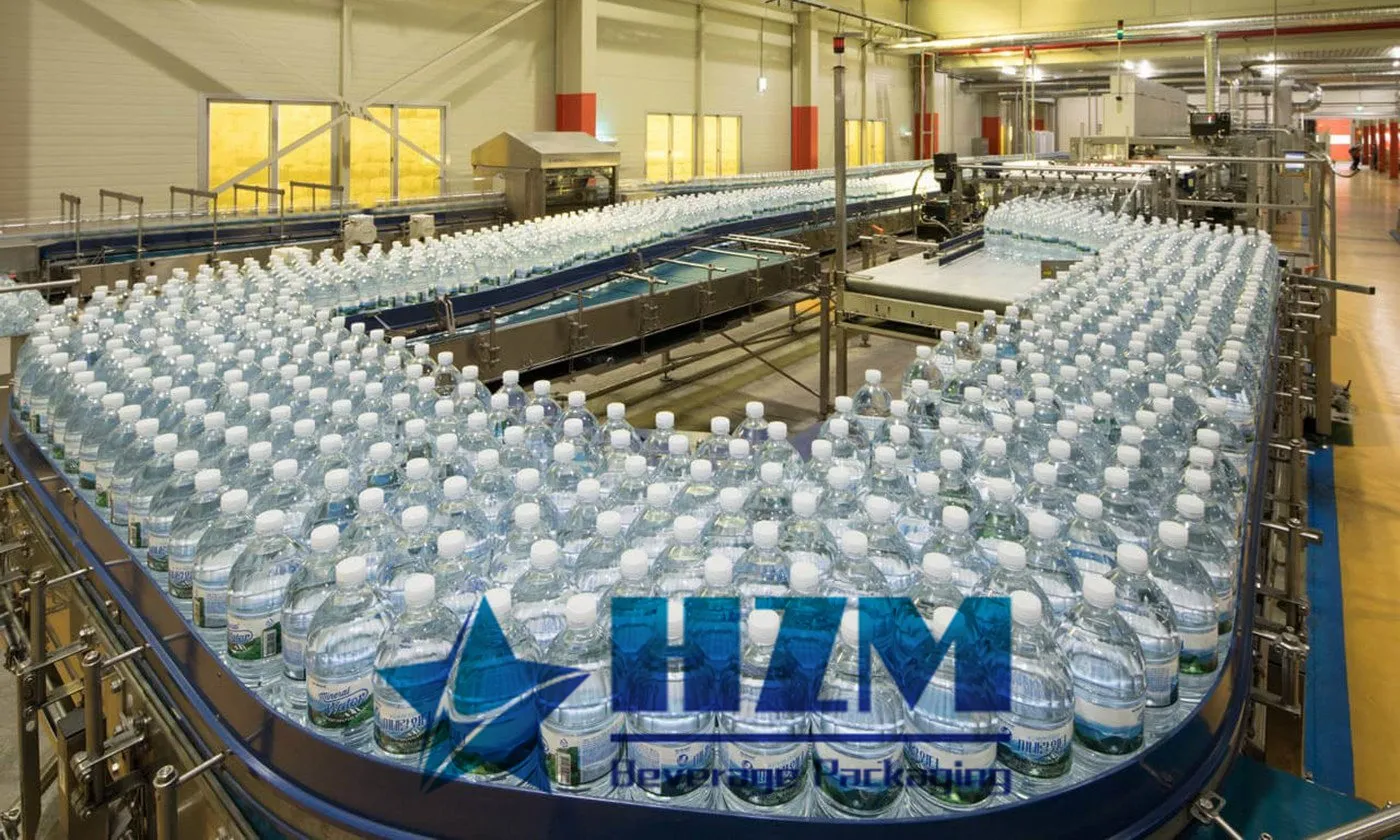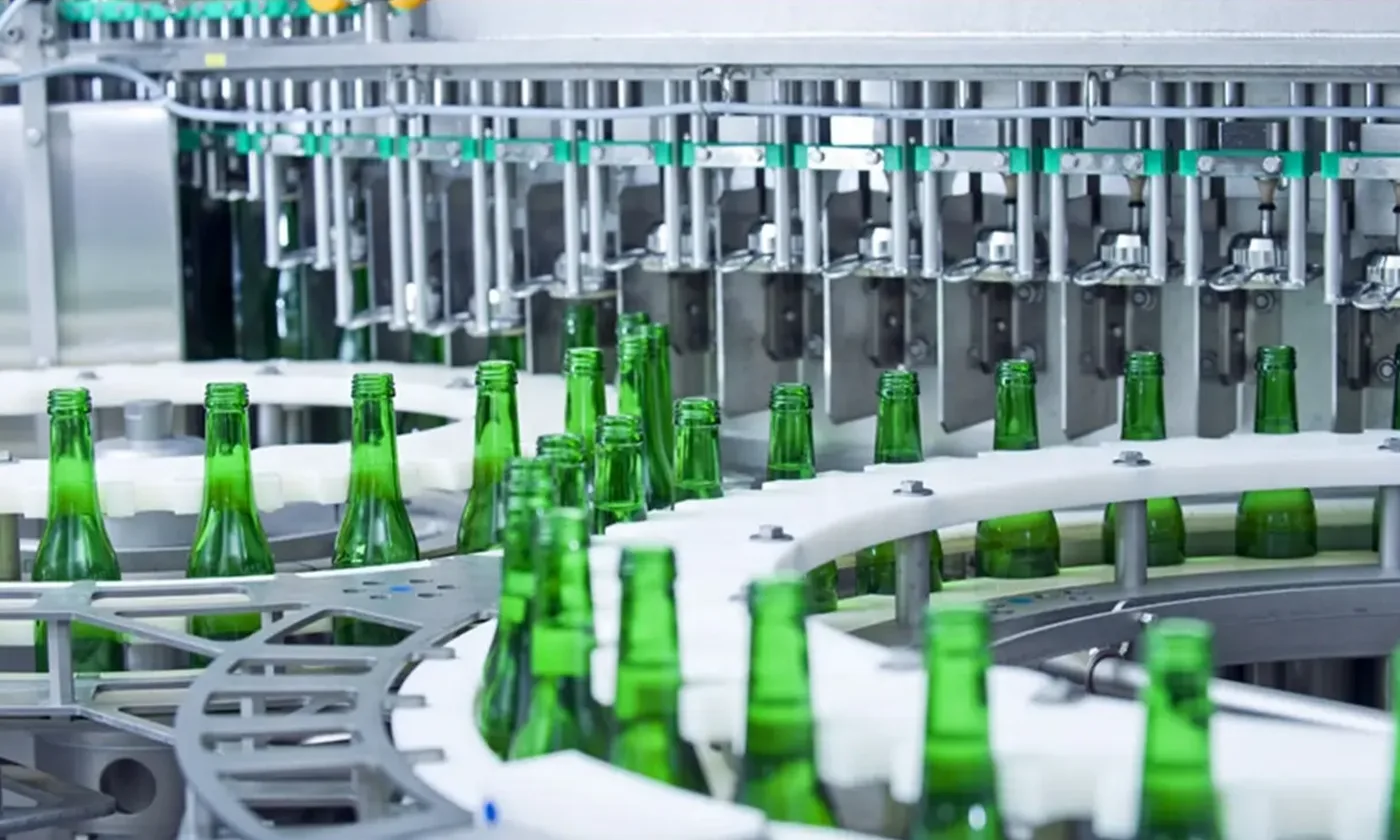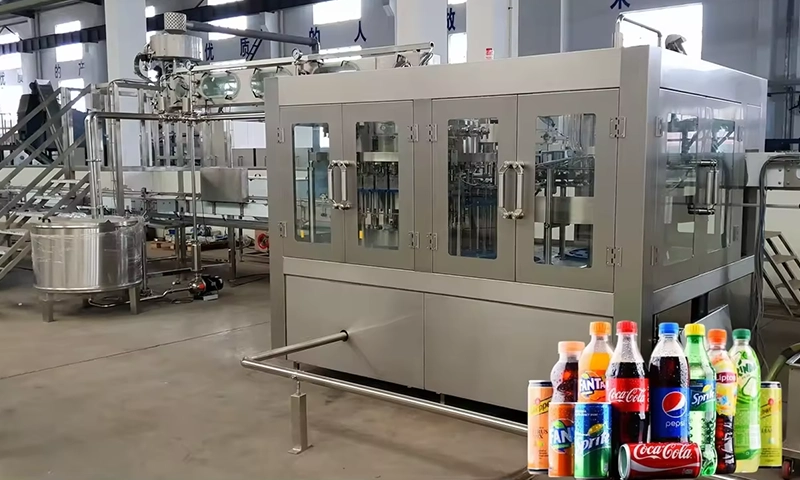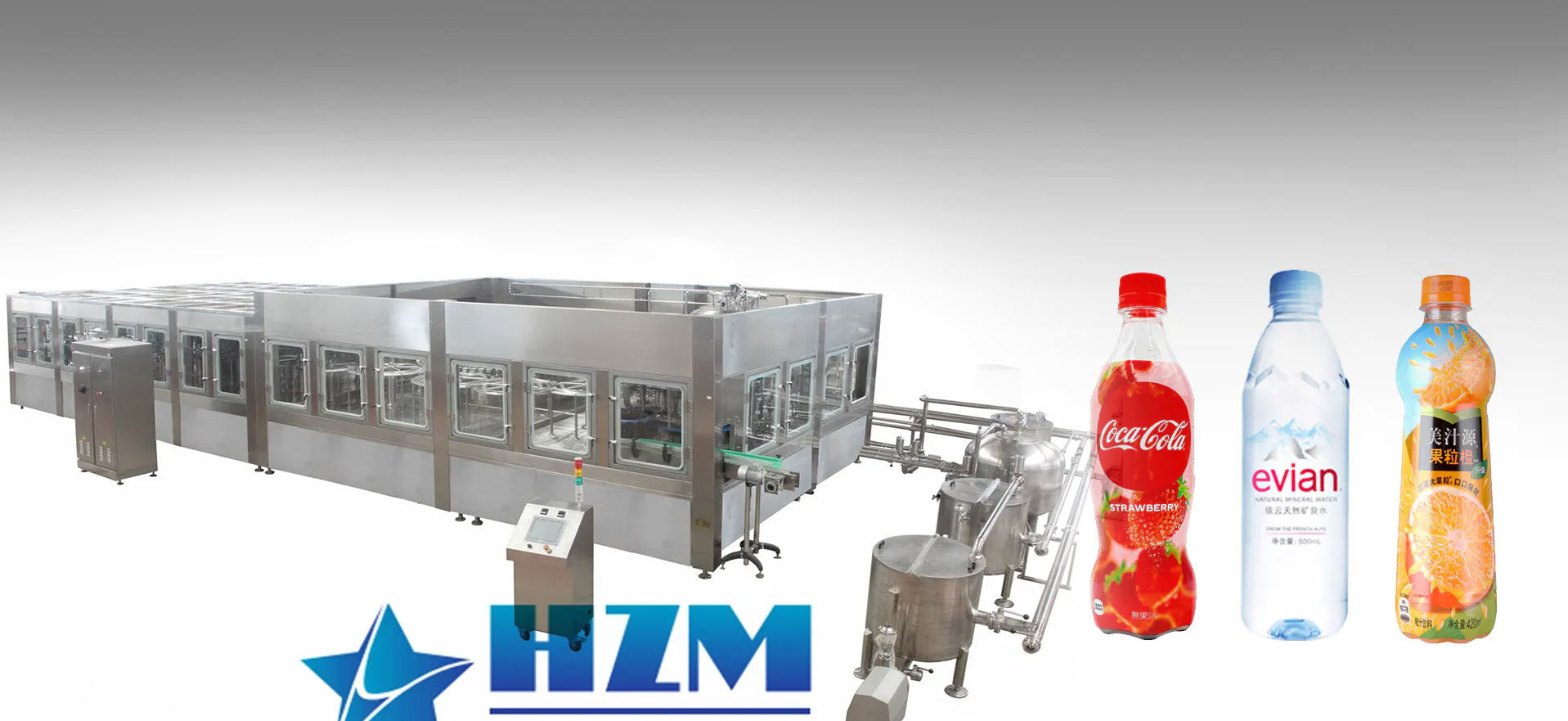
Beverage Production Line Technology
- PET Bottle Beverage Production Line Process: Raw material tank → Dissolving tank → Filtration → Blending tank → Filtration → Tubular sterilizer (UHT sterilizer) → Filling packaging machine → Coding → Bottle inversion sterilizer → Spray cooling → Labeling → Boxing → Coding (large characters) → Robotic palletizing machine → Finished product.
- Aluminum Can Production Line Process: Raw material tank → Dissolving tank → Filtration → Blending tank → Filtration, Plate sterilizer (one-time sterilization) → Filling machine → Can inverter → Liquid level detector → Vacuum detector → Coding machine → Automatic cartoning machine → Coding machine (large characters) → Robotic palletizing machine → Finished product.
- Main Structural Features and Operating Principles
The fully automatic liquid beverage production line mainly consists of independent components such as raw material extraction tank, material and sugar dissolving tank, automatic blending tank, filtration, online automatic cleaning, tubular sterilizer, filling machine, spray sterilization tunnel and pipeline, fittings, electronic control, etc. Equipment debugging is generally arranged at the user's production site.
The online automatic cleaning CIP station can perform overall cleaning and disinfection of all pipes and tanks on the liquid beverage production line using acid, alkali, and hot water when the product hygiene does not meet the standards (or when changing product varieties).
Production Line Process:
During production, the concentrated liquid in the raw material tank is diluted and dissolved in the dissolving tank with purified water (or hot purified water) according to the requirements of the production line process. After filtration, it is proportionally added to the automatic blending tank for mixing and blending. Pure water (or concentrated juice) is added, and a static pressure sensor is used to achieve a certain concentration product. The concentrated product that meets the standard is pumped into the filter to remove impurities in the solution. Finally, the qualified solution is injected into the tubular sterilizer for one-time sterilization, then inputted into the filling packaging machine for packaging. The beverage is then passed through the spray sterilization tunnel for secondary sterilization to extend the product's shelf life. The main structural features of this production line are centralized automatic control, online automatic cleaning, process flow rate recording and preservation, automatic blending, fault alarm, remote monitoring, and other functions. The CIP system can perform overall cleaning and disinfection of all pipes and tanks mentioned above at any time.
This production line is suitable for processing typical materials such as dairy products, milk beverages, fruit juice beverages, functional drinks, tea beverages, Chinese herbal beverages, etc. The processed products can be in the form of PET bottles, PE bottles, composite paper boxes, etc.
5.1 Tubular Sterilizer
The tubular aseptic sterilizer has a wide sterilization temperature range, precise sterilization temperature control, and a wide range of applications. Its features include: the material flows at a certain flow rate inside the tubes of the heat exchanger, while the water that exchanges heat with the material flows outside the tubes of the heat exchanger. The inner and outer sides are isolated by the tube wall, so it does not cause any harmful effects on the material inside the tubes.
The tubular aseptic sterilizer mainly consists of electrical control cabinet, frame, tubes, balance tank, hot water, cooling system, and several other parts. All the parts are assembled together to make the structure compact, occupying a small area, and easy to transport and install.
The main innovations of the tubular aseptic sterilizer are as follows:
One innovation is the use of high-temperature and high-pressure hot water for instant sterilization of beverages, extending their shelf life, effectively avoiding the damage tocolor, aroma, taste, and important nutritional components caused by sterilization.
Another innovation is the addition of a heat recovery section, which can effectively save energy, reduce production costs, and improve the competitiveness of the products in the market.
The third innovation is full automation control. It effectively avoids the influence of external human factors on the production process, ensuring the quality of the products. The use of tube structure improves energy conversion efficiency. The unique sealing structure is reliable and easy to clean. The adoption of a properly matched thermal energy recovery device ensures system stability, reliability, and energy savings. The product has an aesthetically pleasing appearance, convenient operation, and a user-friendly interface, making it a leading technology domestically.
5.2 Continuous Spray Sterilization Tunnel
The continuous spray sterilization tunnel mainly consists of preheating spray pipes, preheating tunnel body, pre-sterilization spray pipes, pre-sterilization tunnel body, material conveying chain, sterilization spray pipes, sterilization tunnel body, pre-cooling spray pipes, pre-cooling tunnel body, cooling spray pipes, cooling tunnel body, water tank, connecting pipes, heat exchanger, water pump, and other independent components. The basic principle of sterilization in this project is to subject the items passing through the tunnel to a temperature change curve (obtained through calculation or experimentation) that is set in advance. Bacteria undergo temperature changes from cold to hot and vice versa as they pass through each section of the tunnel, resulting in bacterial death and achieving the purpose of sterilization without damaging the nutritional components. The key technology is to set the temperature change curve for each section of the tunnel (obtained through calculation or experimentation) in advance. By utilizing the characteristic that all living organisms cannot quickly adapt to changes in environmental temperature, the items passing through the tunnel experience different temperatures (high, low, cold, hot) in each section, causing bacteria in the items to become ill and eventually die, thus achieving both sterilization and preservation of nutritional components.
The major technical indicators of the significant scientific and technological research program issued by the Ministry of Science and Technology are as follows:
(1) The beverage production line achieves full automation, reduces labor costs by 80%, and achieves a 100% product qualification rate. It significantly improves the production capacity and quality of equipment, reaching a leading level domestically in terms of automation.
(2) Technical indicators of the continuous spray sterilization tunnel:
The tunnel temperature increases from 30°C to 90°C within 10 minutes.
Insulation thickness ensures that the temperature inside the tunnel remains stable with minimal heat loss.
The sterilization time is adjustable and can be set according to the specific requirements of different products.
The design of the tunnel ensures uniform distribution of the sterilization medium, guaranteeing effective sterilization of the entire surface of the products.
The tunnel is equipped with a precise temperature control system to maintain the desired temperature throughout the sterilization process.
The water circulation system in the tunnel ensures efficient heat exchange and prevents contamination.
The tunnel is designed to be easily cleaned and maintained, with removable parts and access points for thorough sanitation.
Overall, the continuous spray sterilization tunnel utilizes innovative temperature control and sterilization techniques to achieve high-quality sterilization while preserving the nutritional integrity of the products. Its advanced design and automation capabilities contribute to improved productivity, cost-effectiveness, and product competitiveness in the market.
In conclusion, the beverage production line and its key components, such as the tubular sterilizer and continuous spray sterilization tunnel, employ advanced technology to ensure efficient and hygienic production processes. These systems not only meet the requirements of sterilization but also contribute to the preservation of product quality, extending shelf life, and enhancing the overall competitiveness of the beverages in the market.
TAG: Beverage Filling Machinery Beverage Filling Machines
-
![Core Selling Points of Glass Bottle CSD Filling & Capping Line]()
Core Selling Points of Glass Bottle CSD Filling & Capping Line
-
![Customizable beverage filling system]()
Customizable beverage filling system
-
![Differences Between Hot Filling and Cold Filling in Beverage Filling Machines]()
Differences Between Hot Filling and Cold Filling in Beverage Filling Machines
-
![Selecting a Dedicated RO Reverse Osmosis Water Treatment System for a Purified Water Beverage Production Line]()
Selecting a Dedicated RO Reverse Osmosis Water Treatment System for a Purified Water Beverage Production Line
-
![How Fast Is the Labeling Speed of Tea Beverage Packaging Machines?]()
How Fast Is the Labeling Speed of Tea Beverage Packaging Machines?


